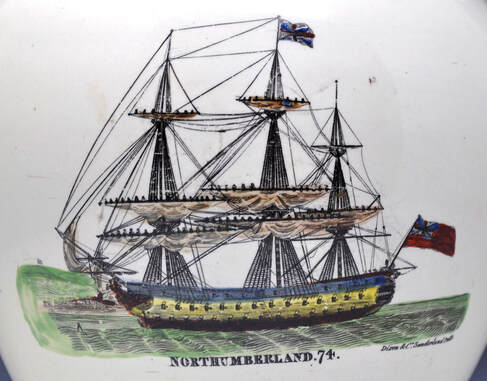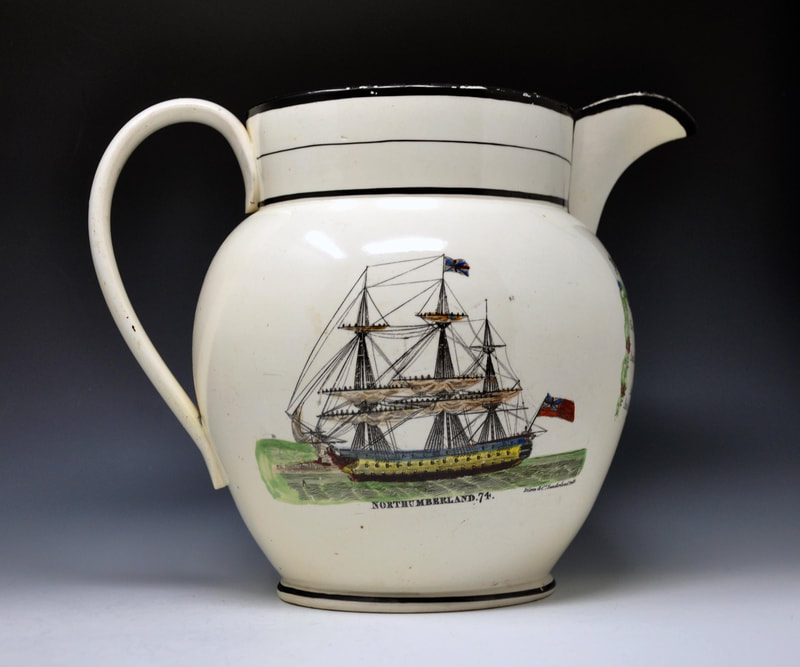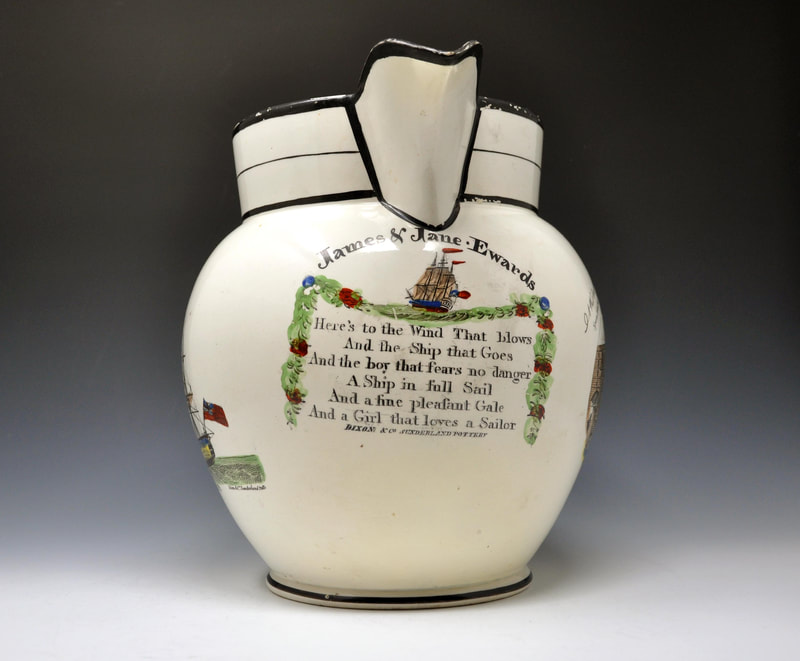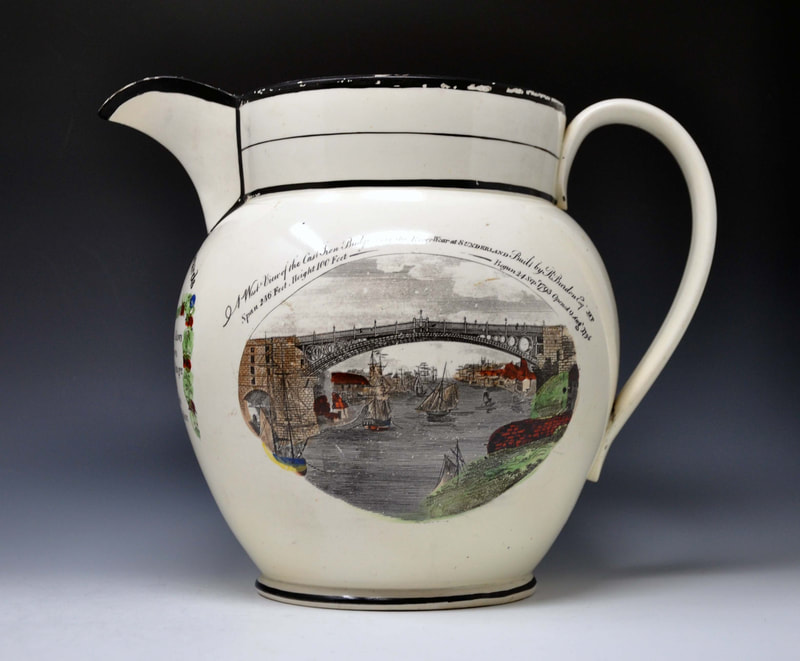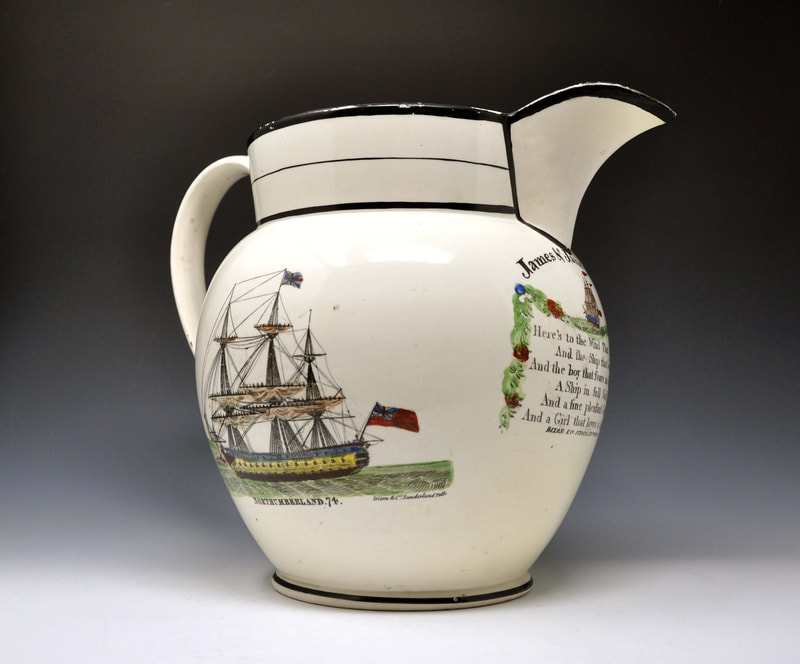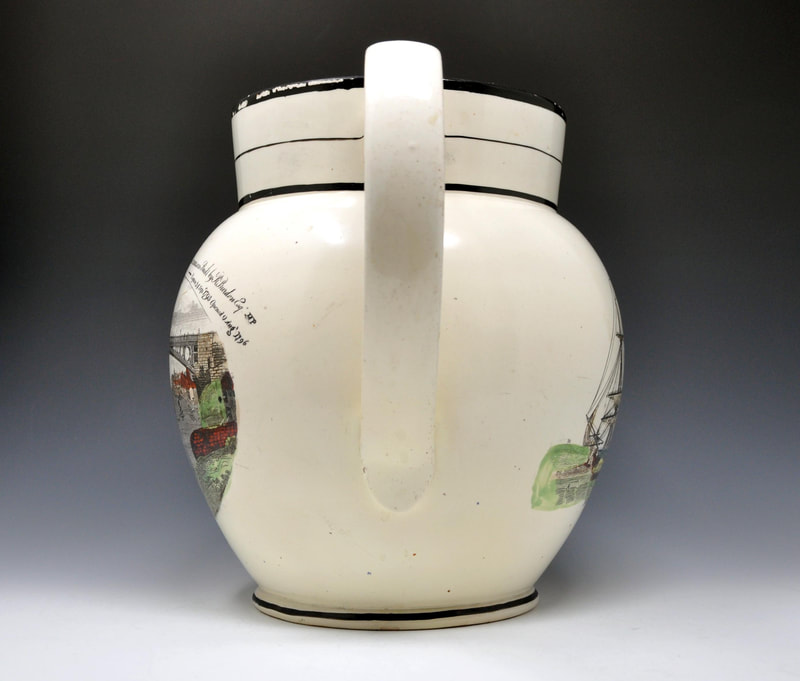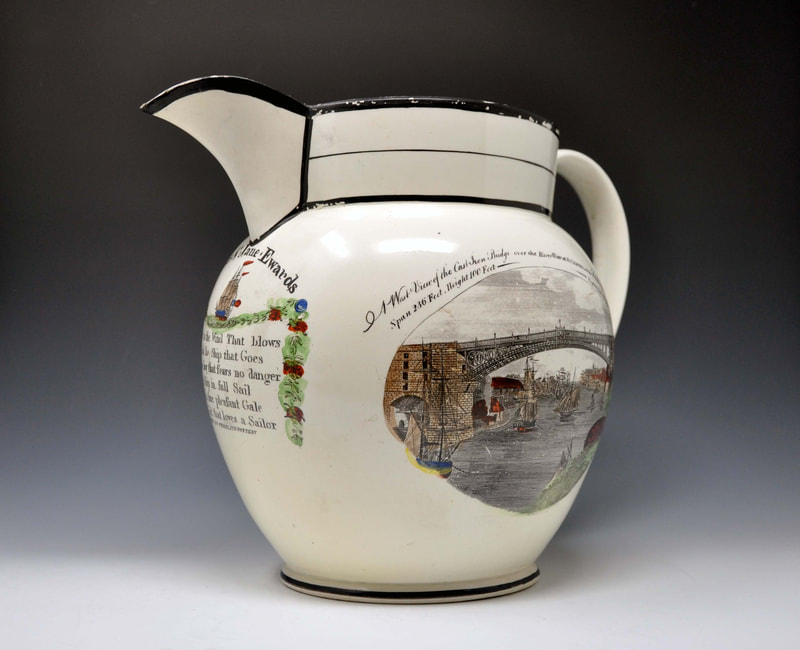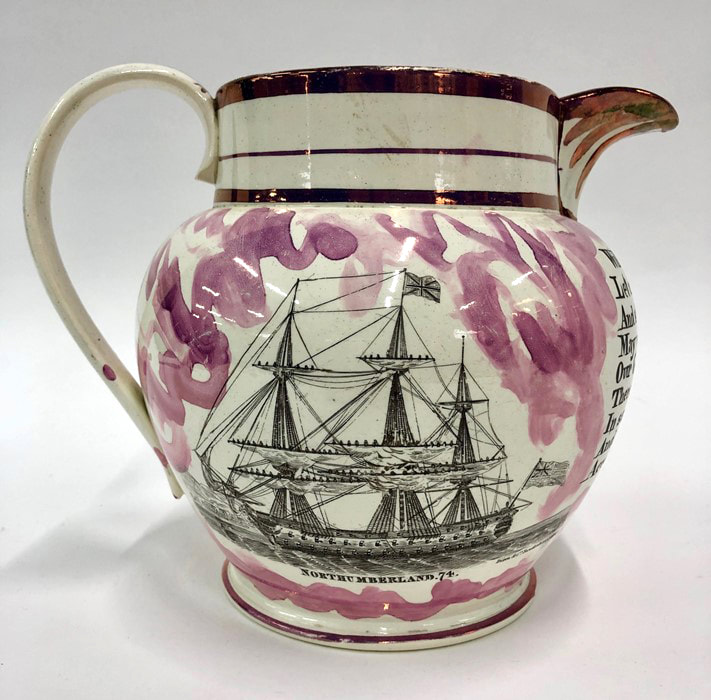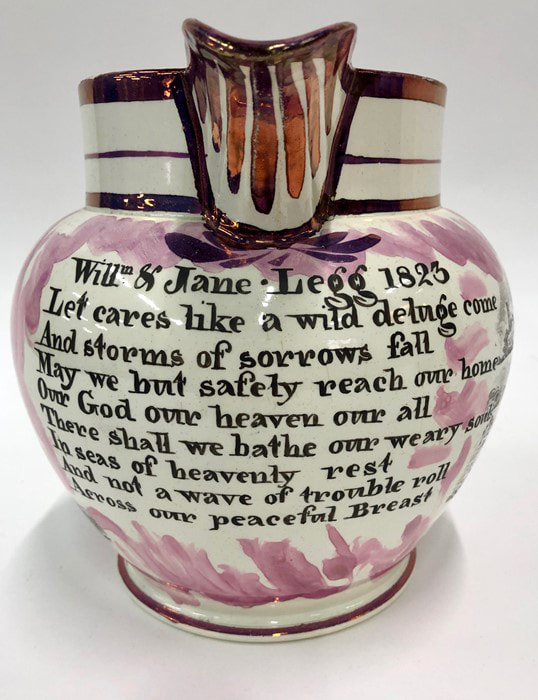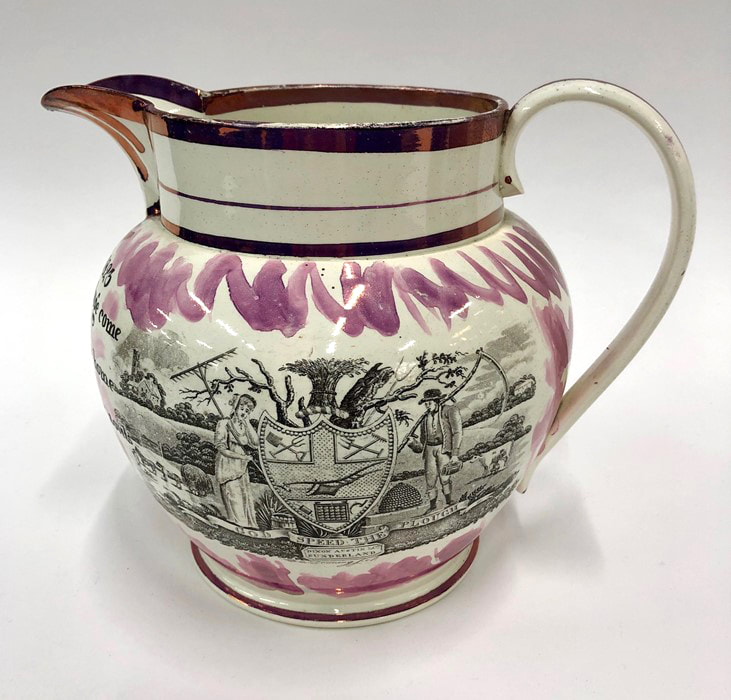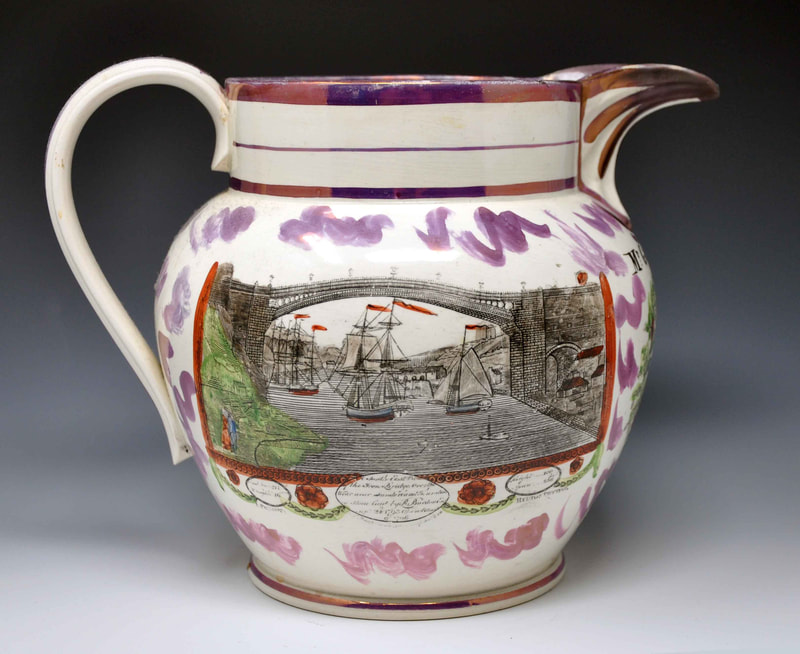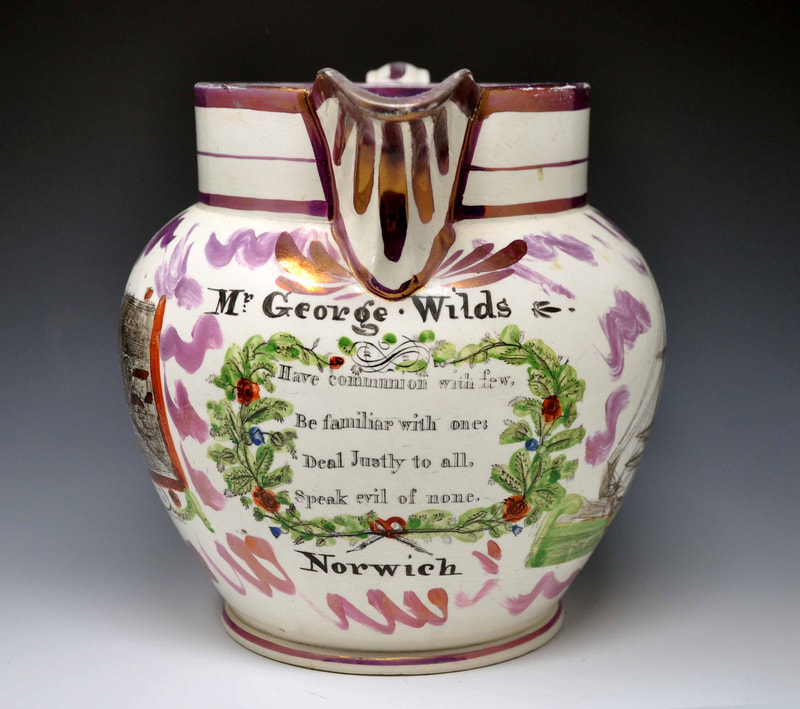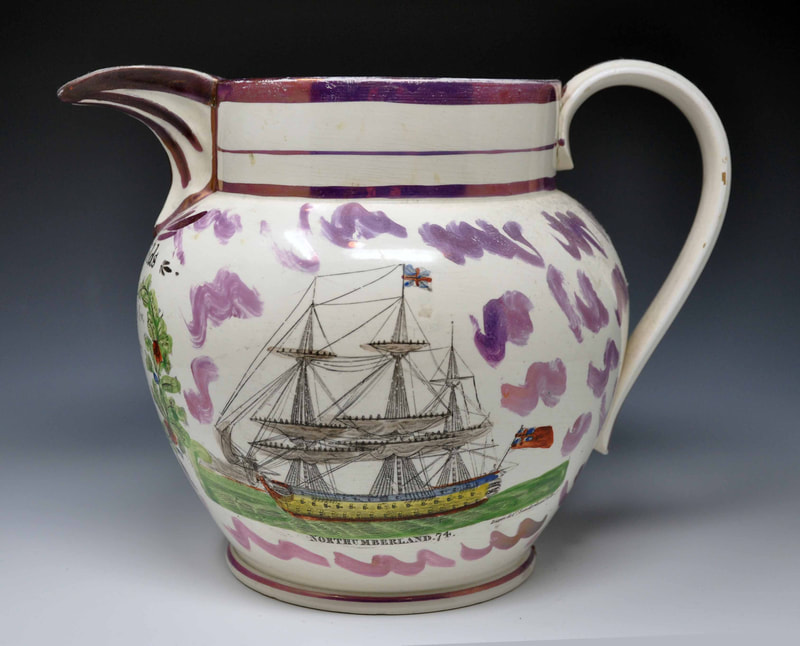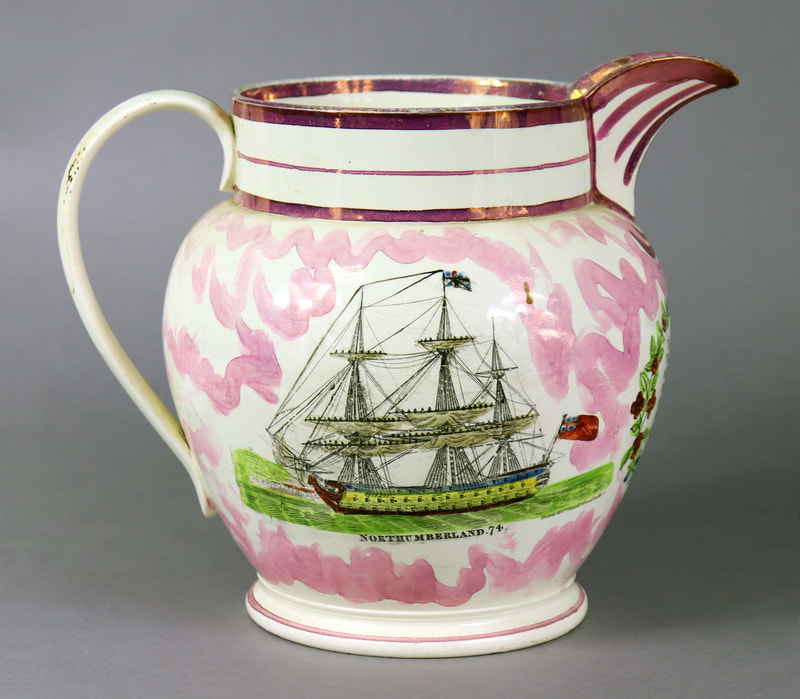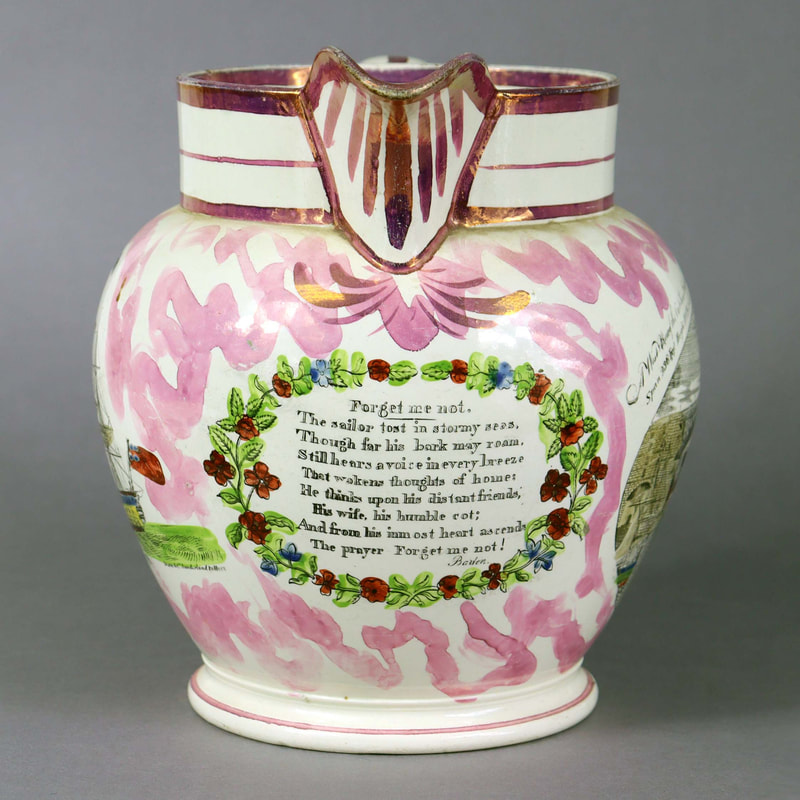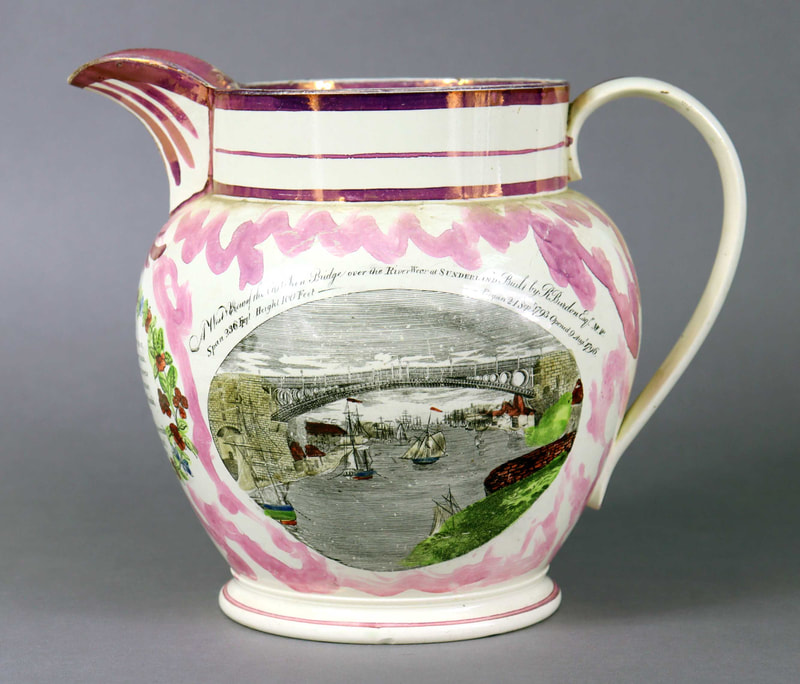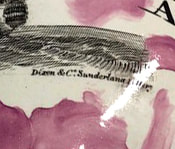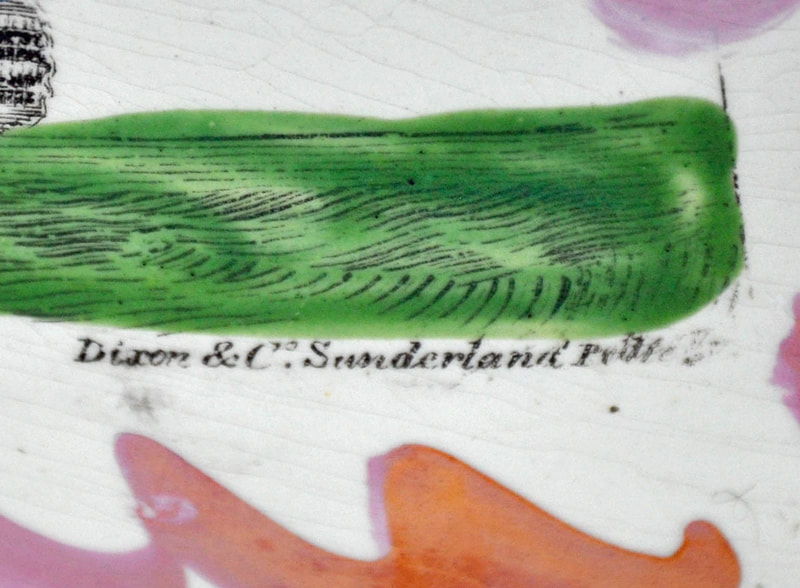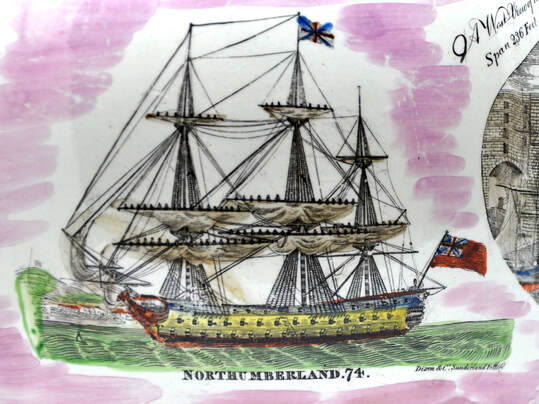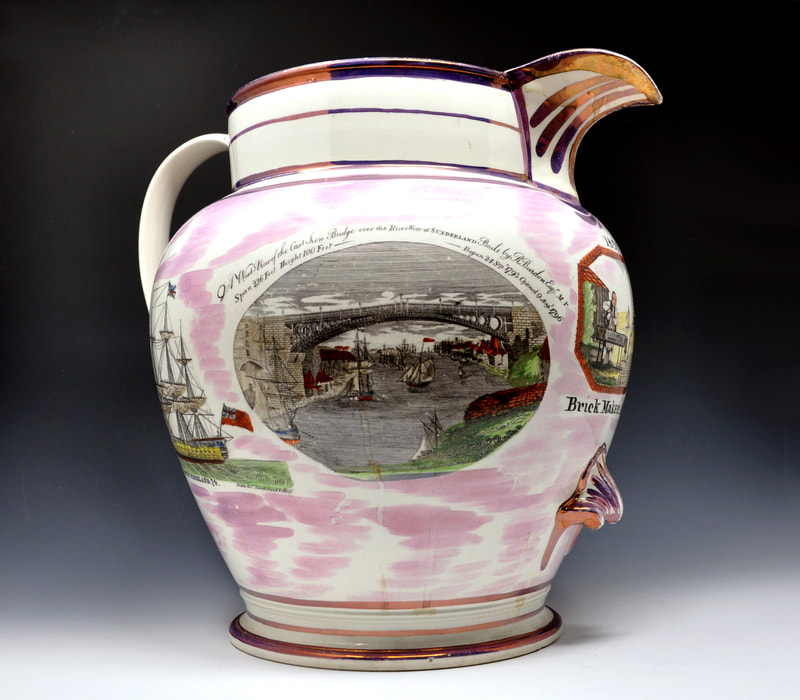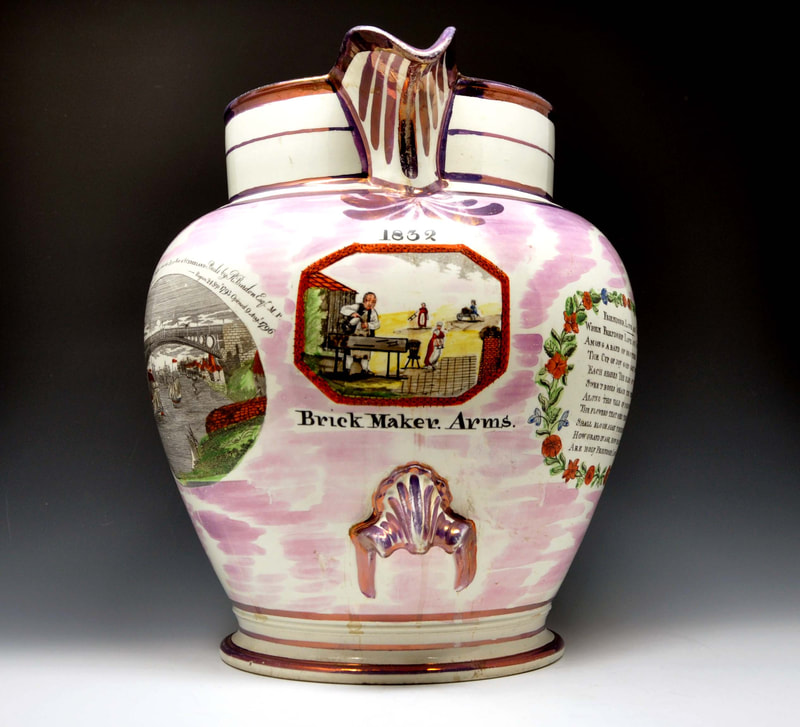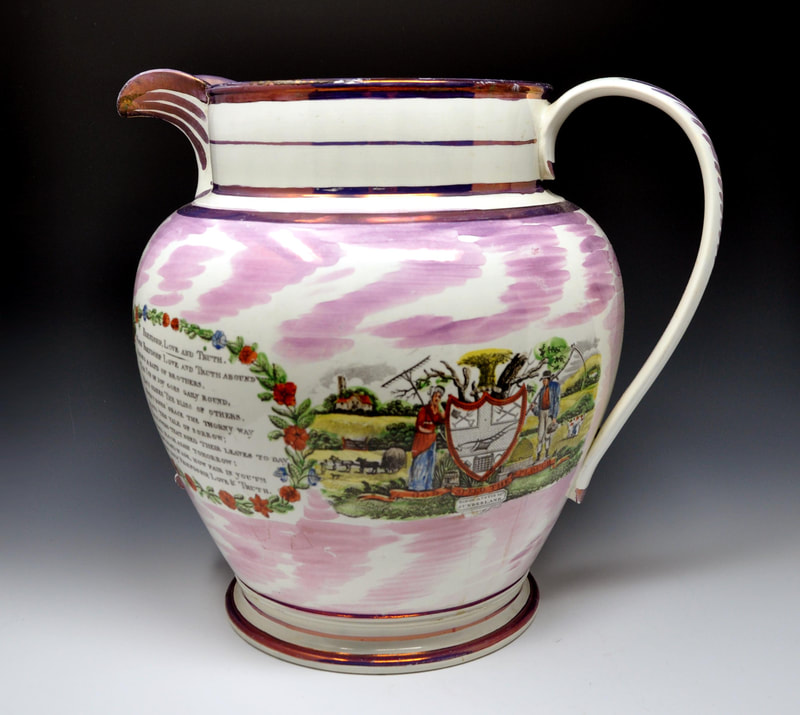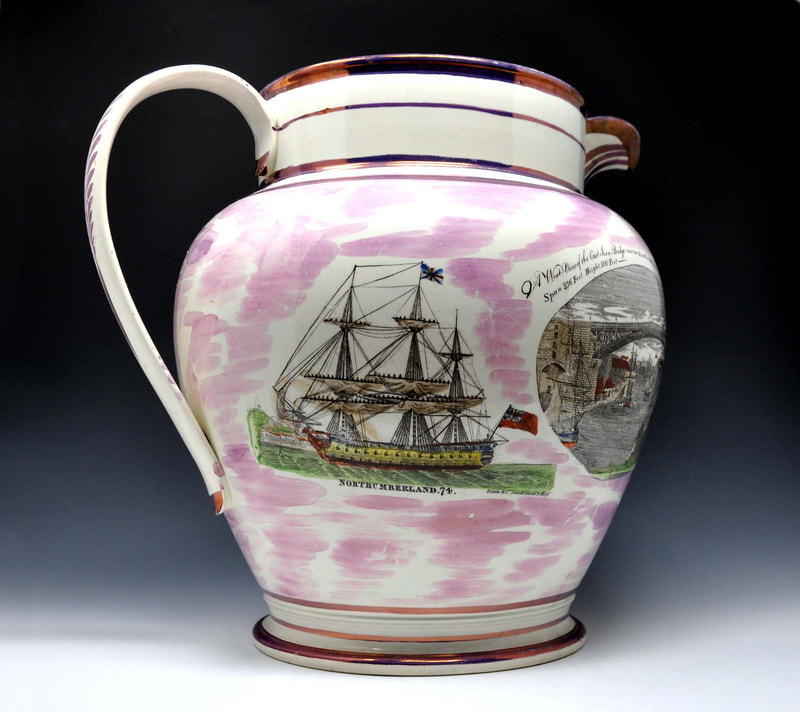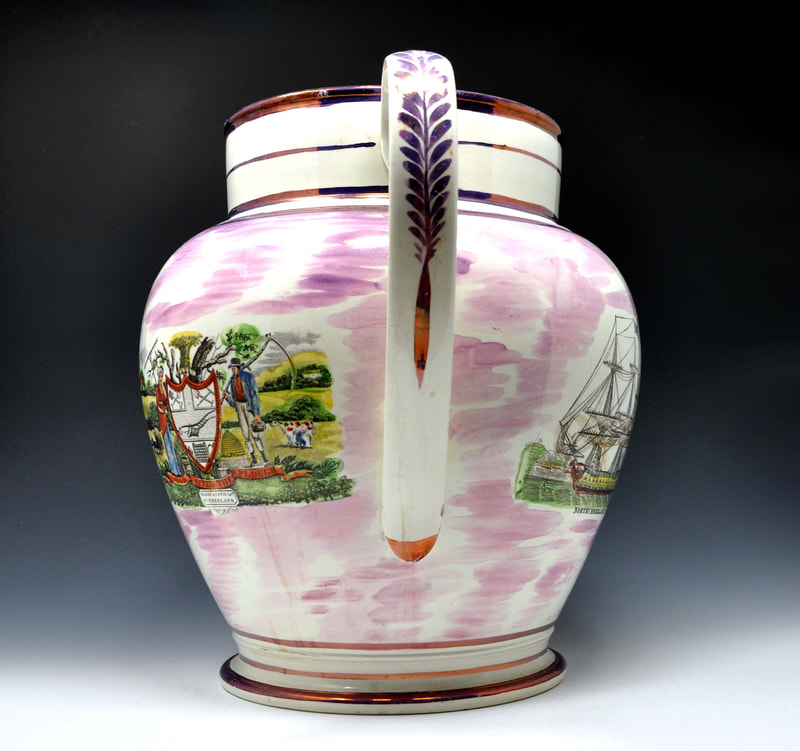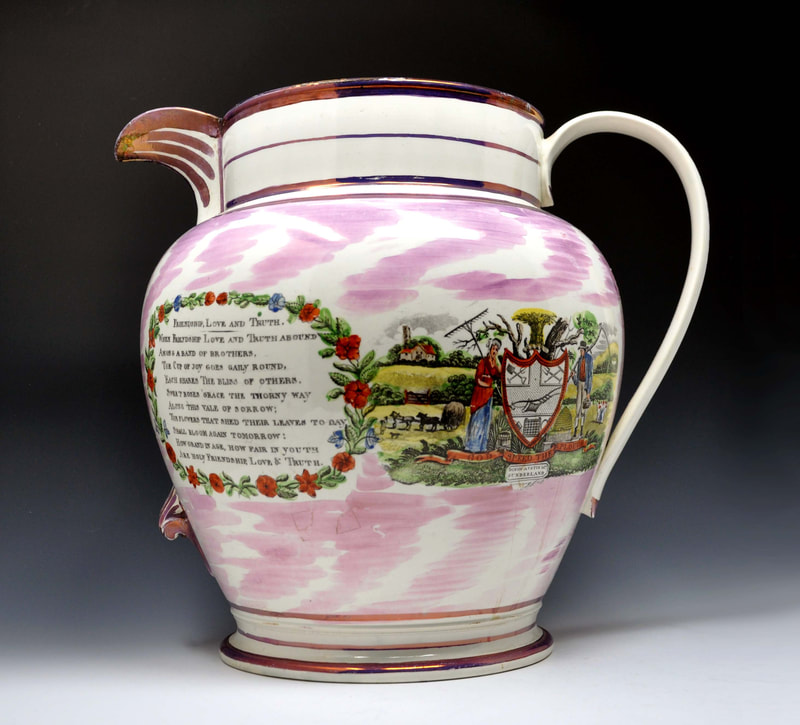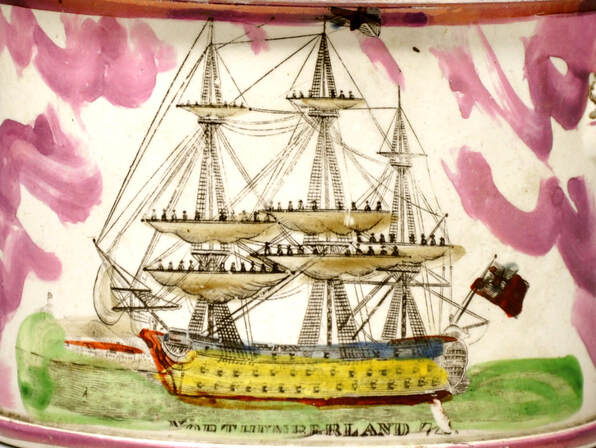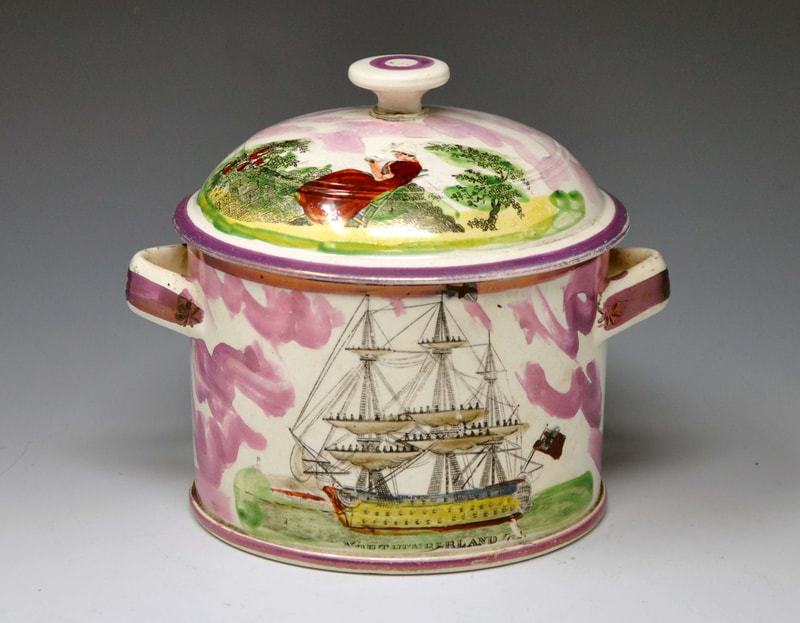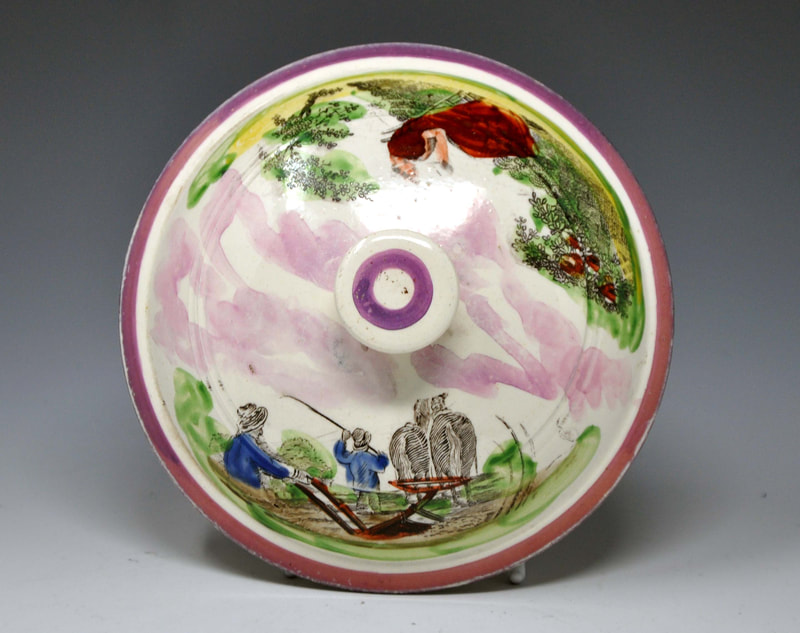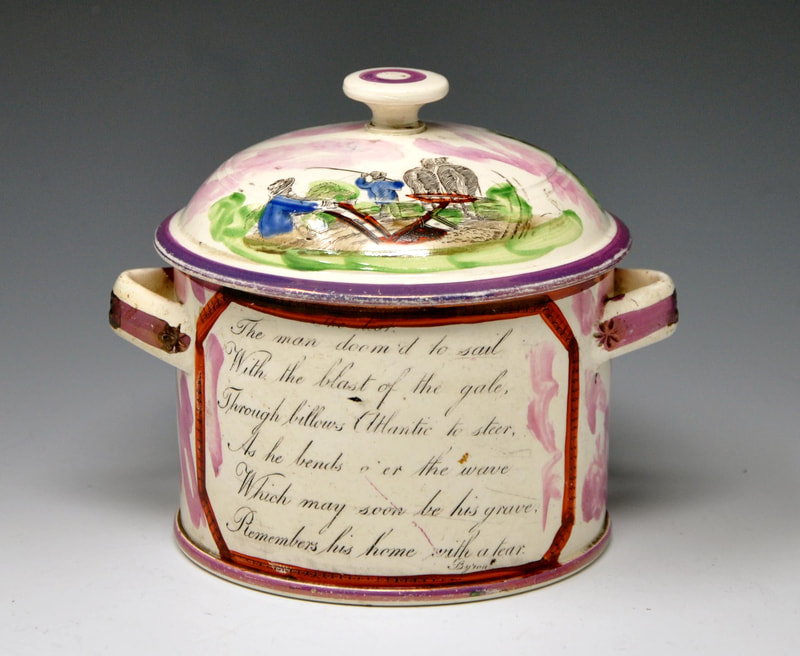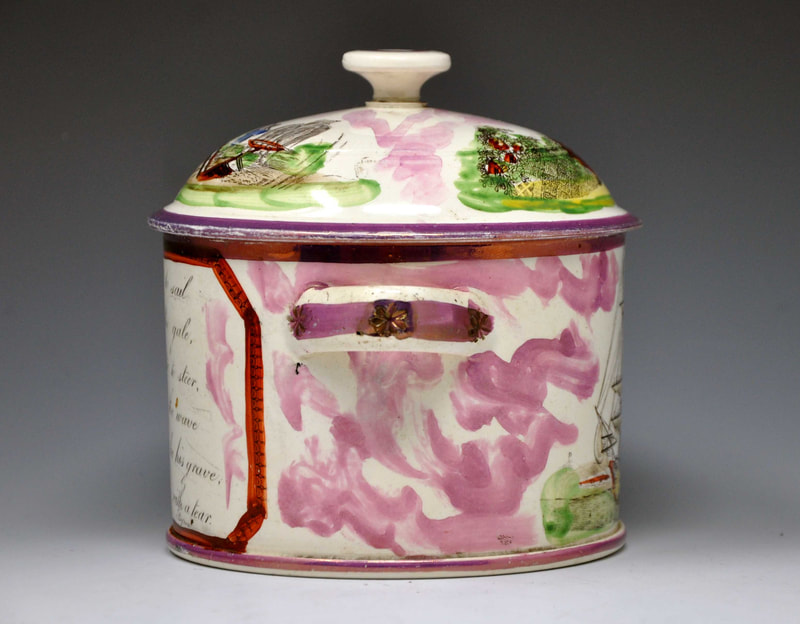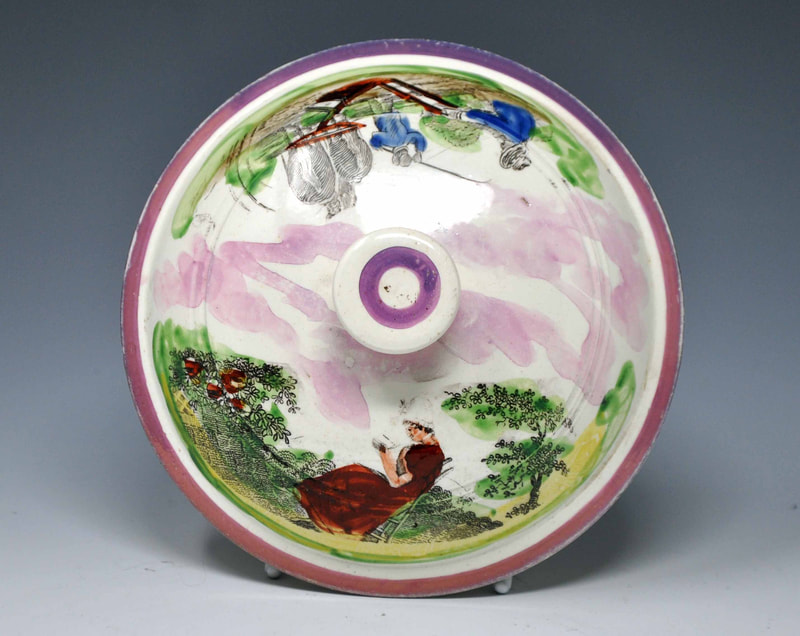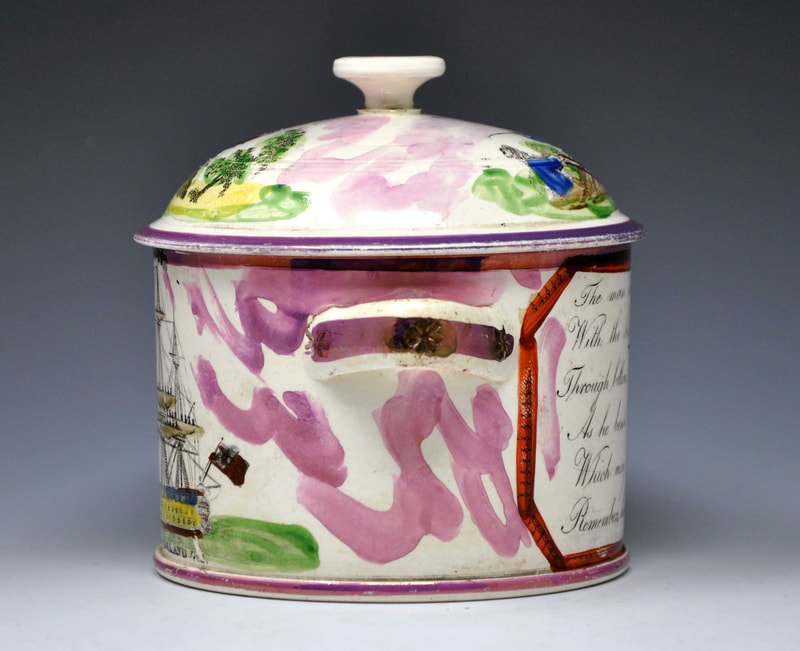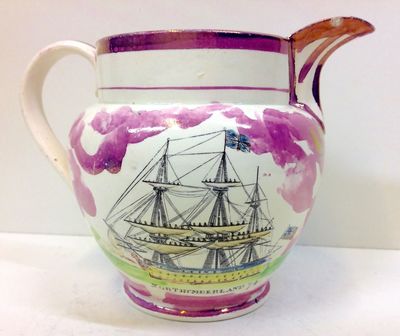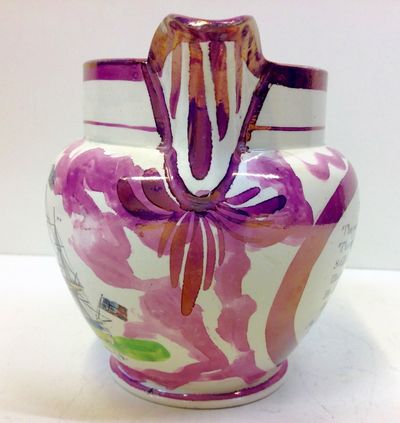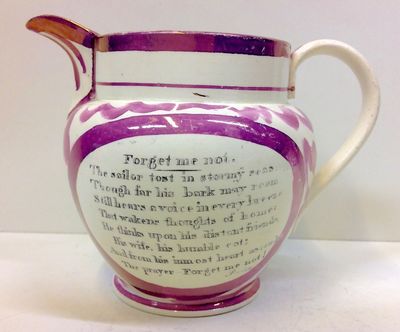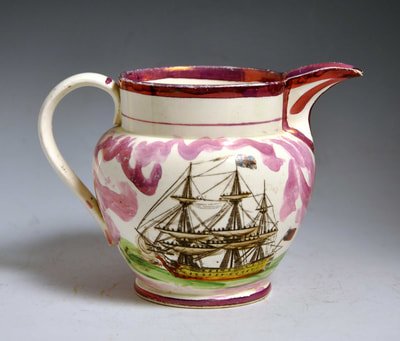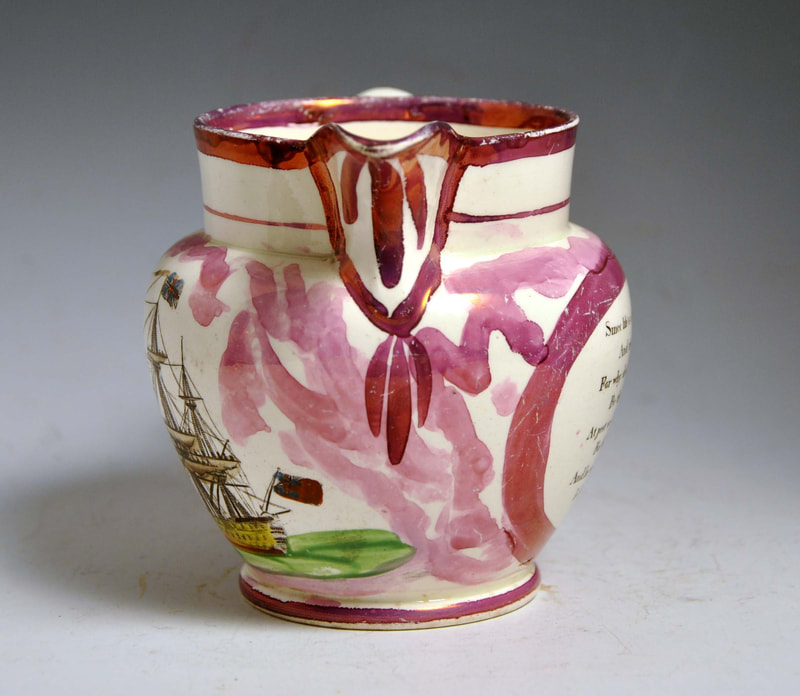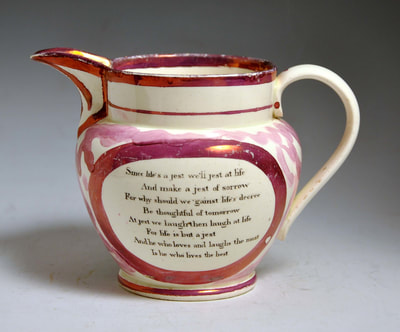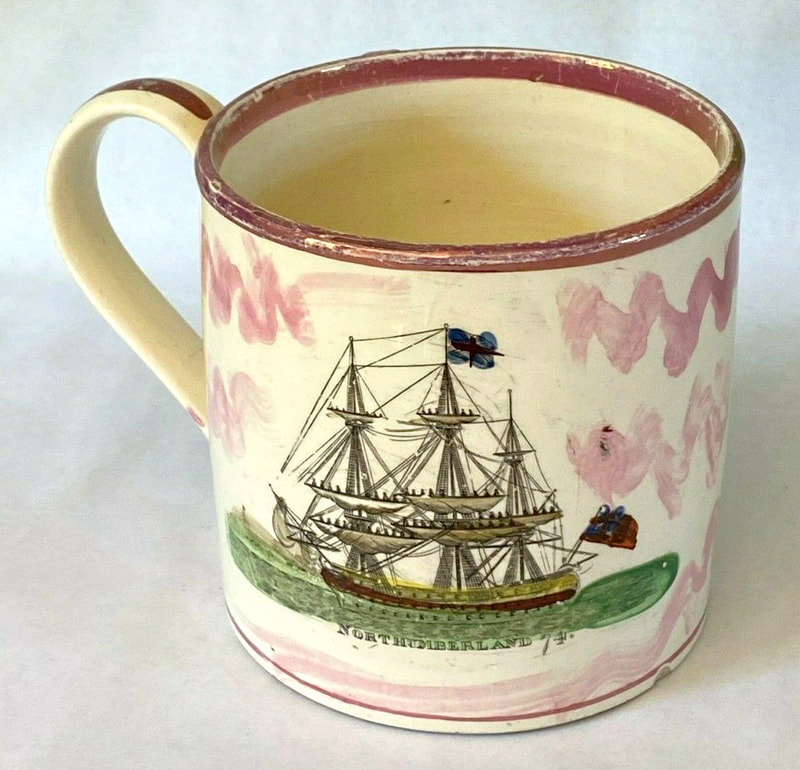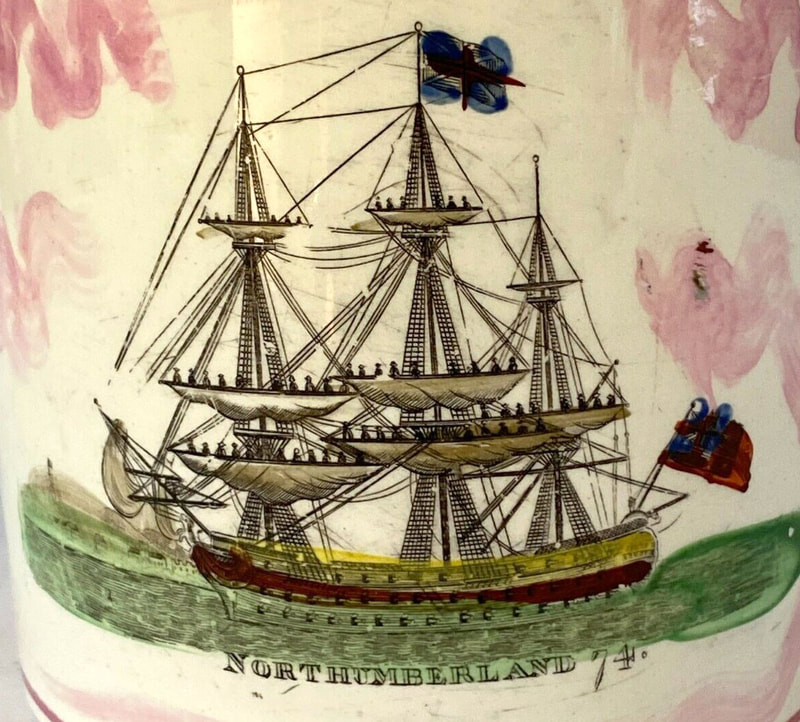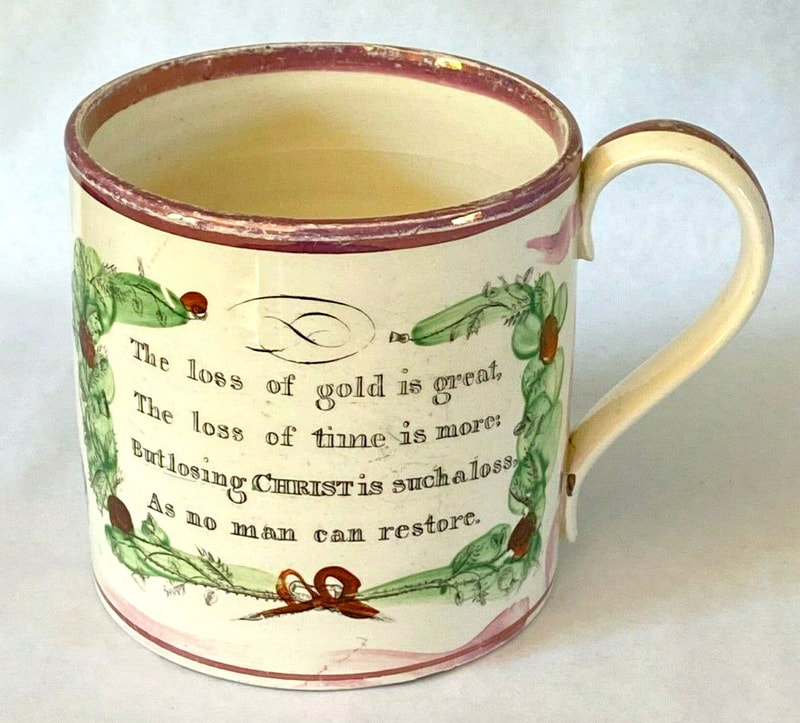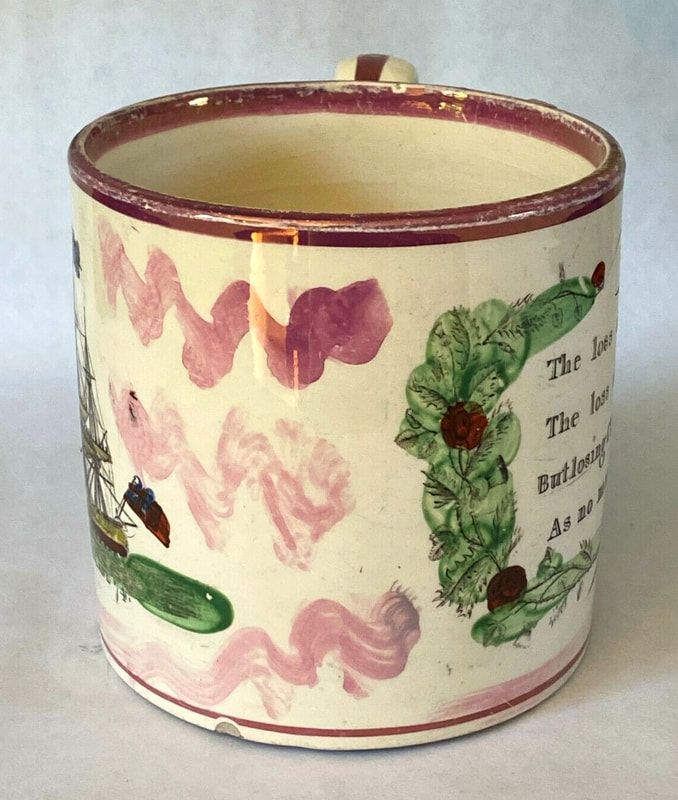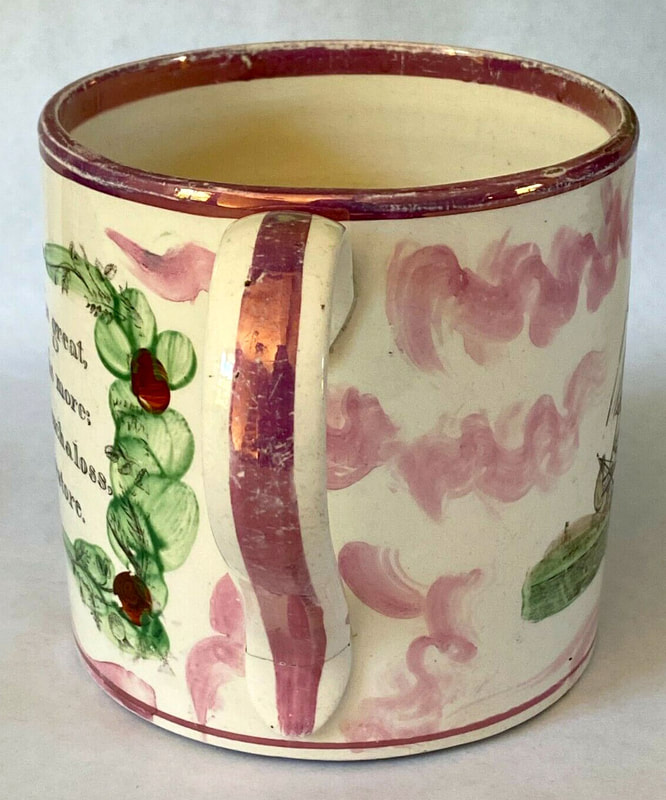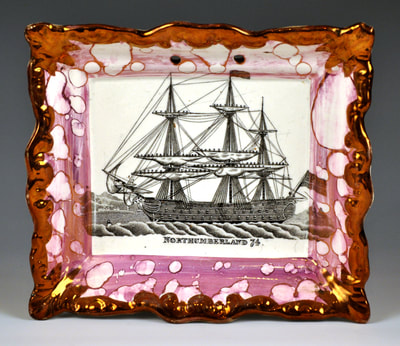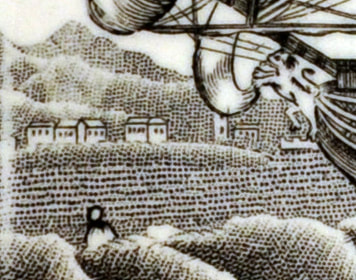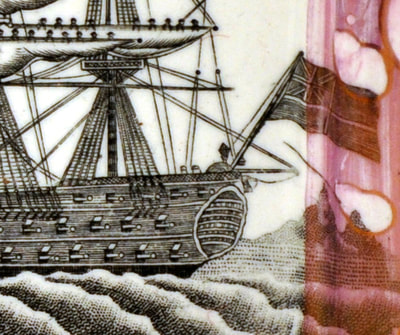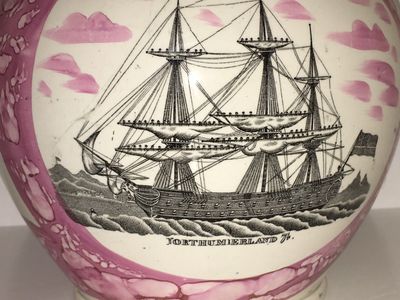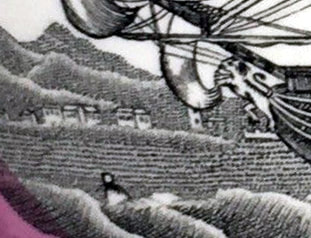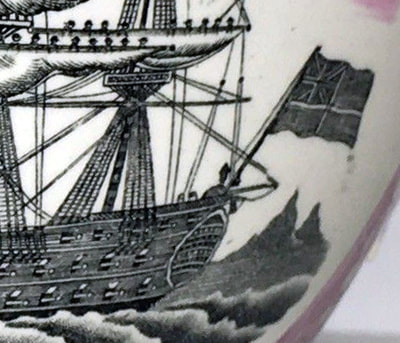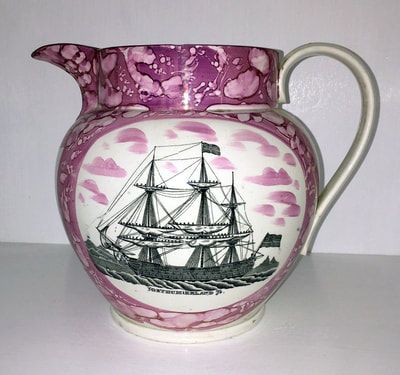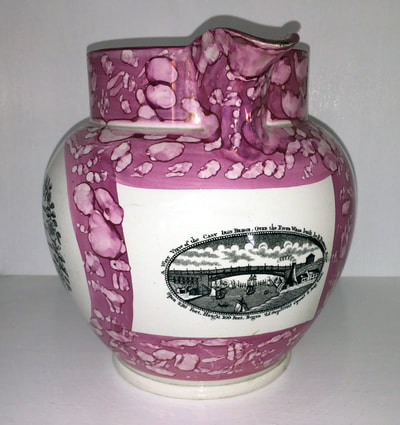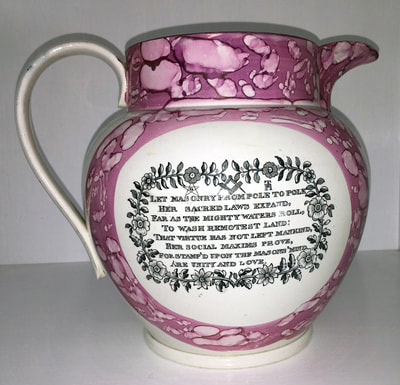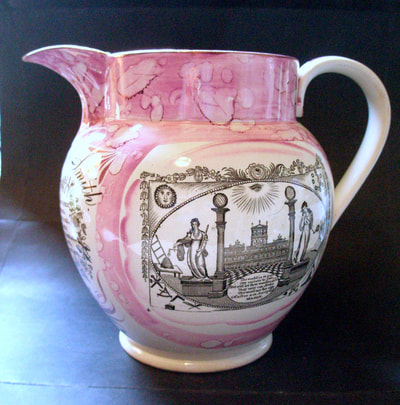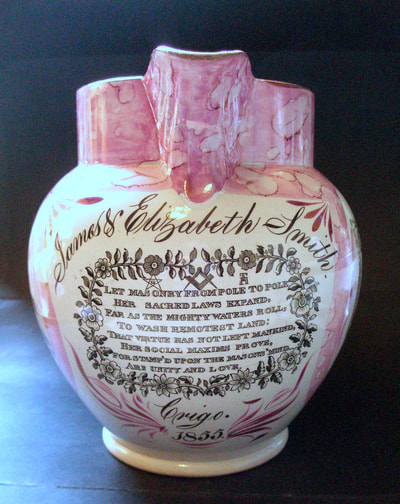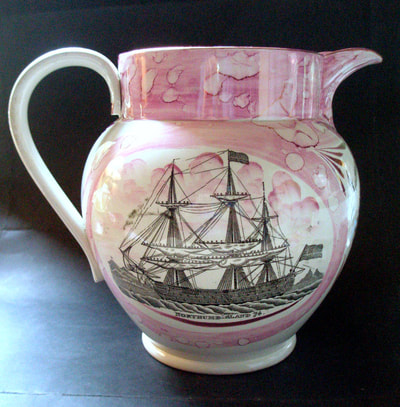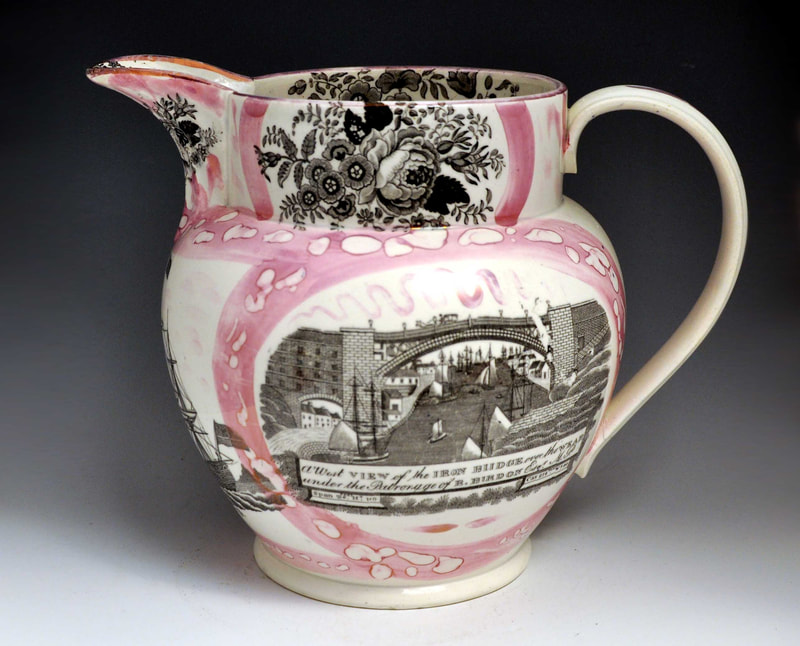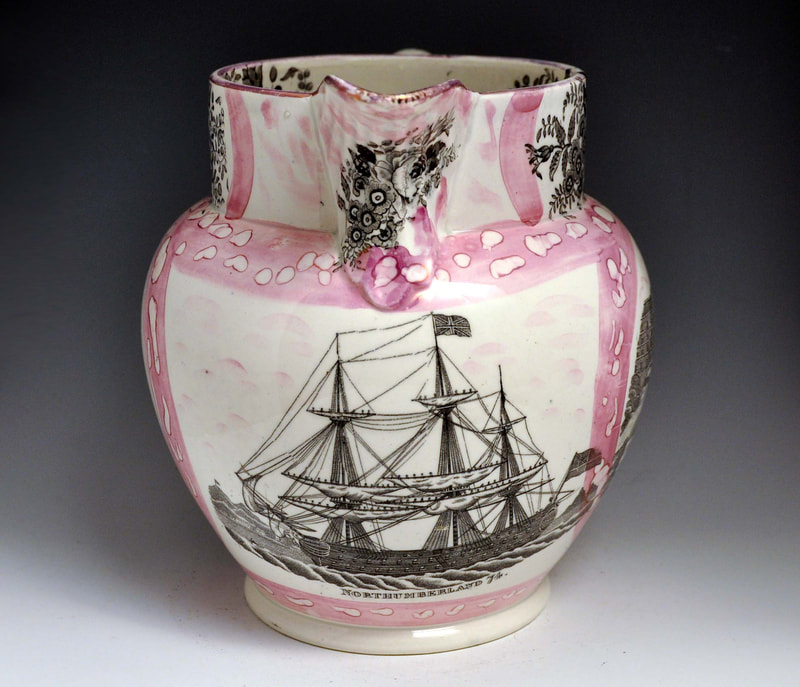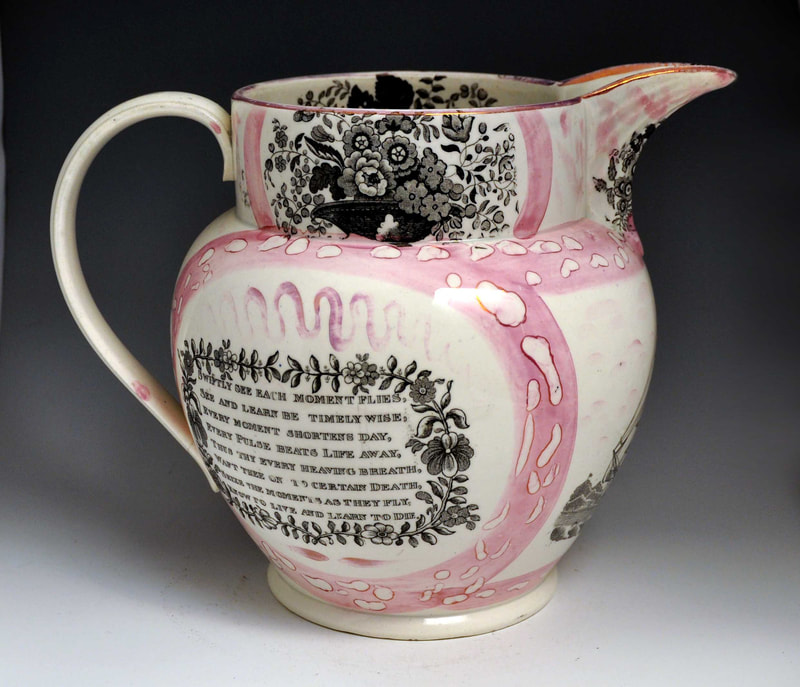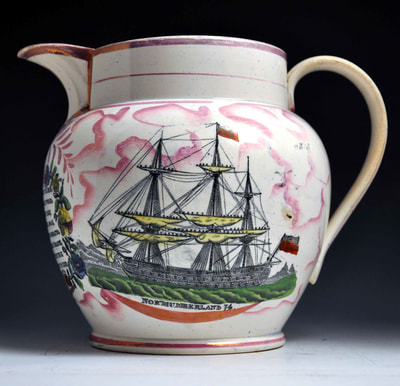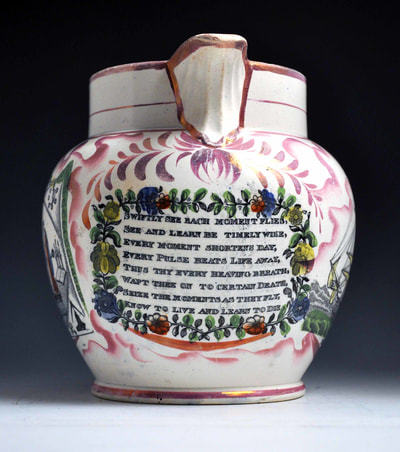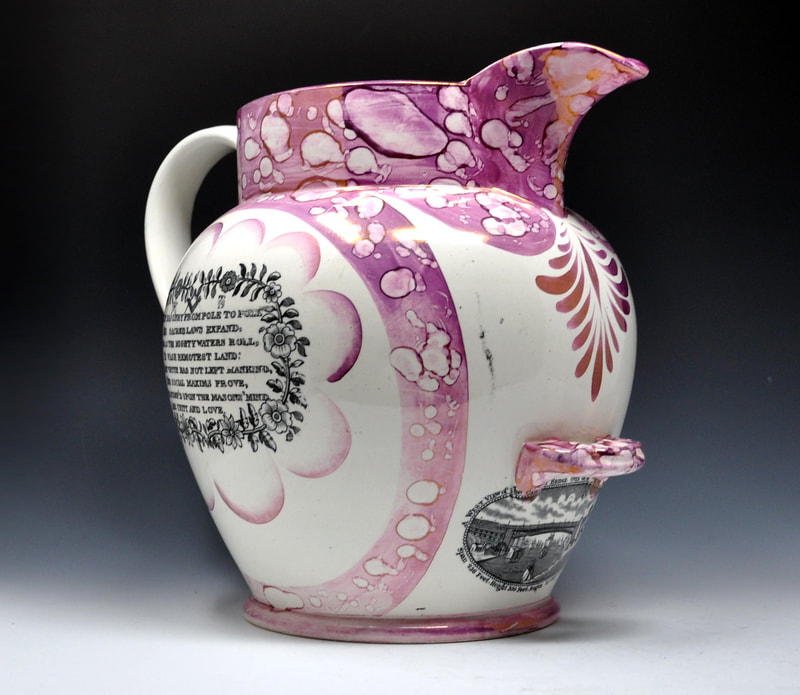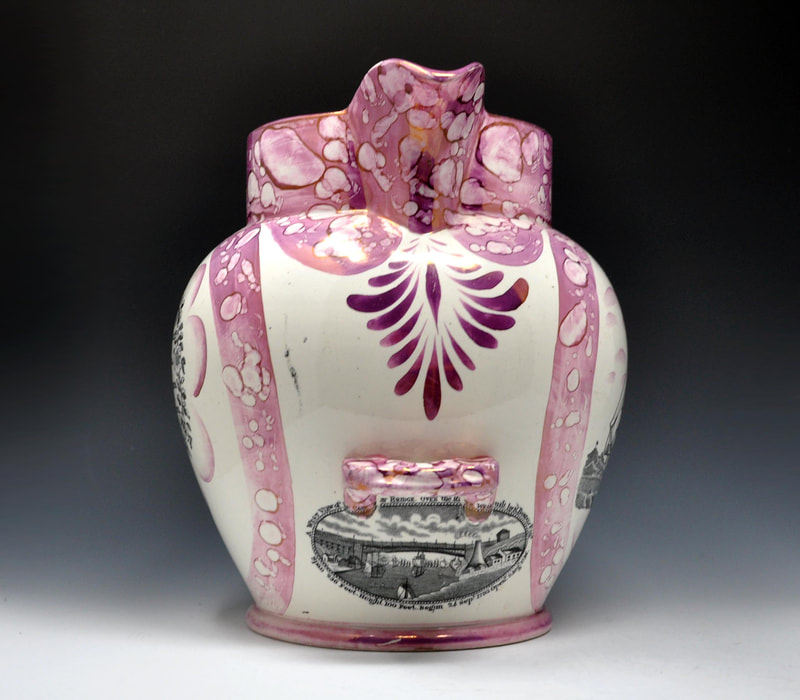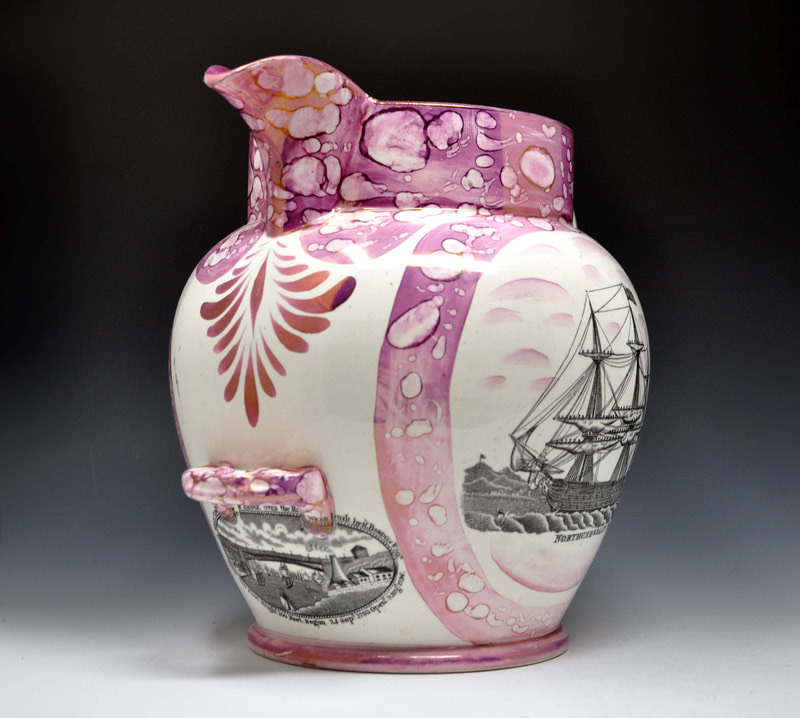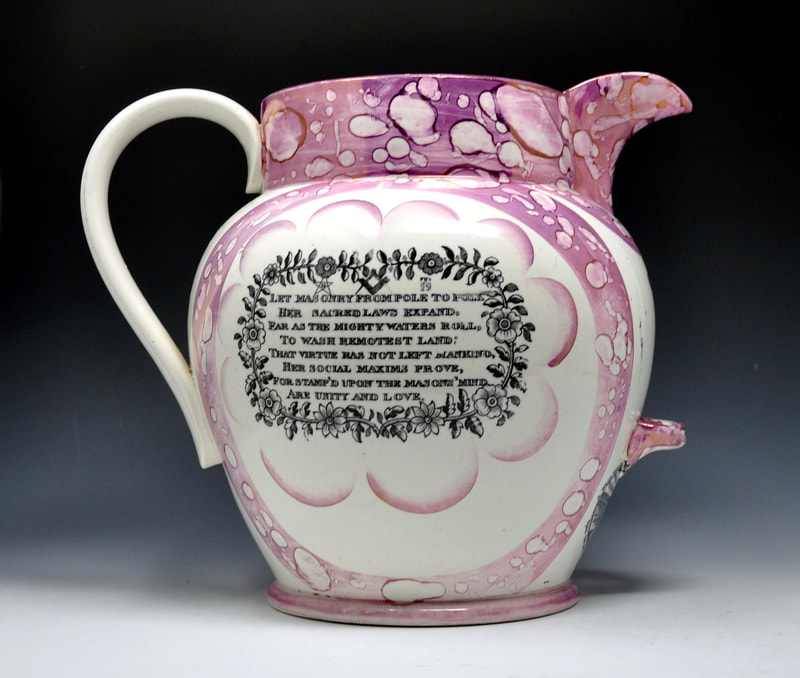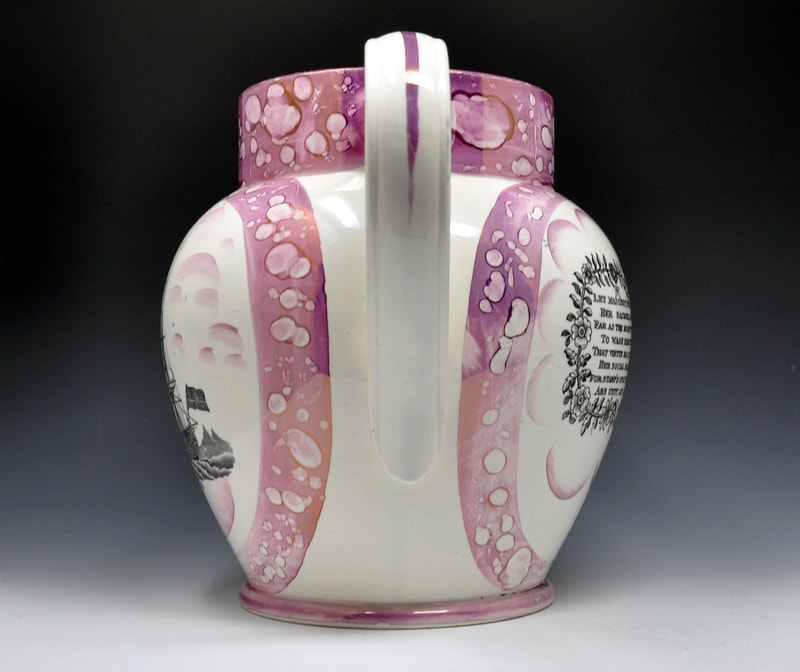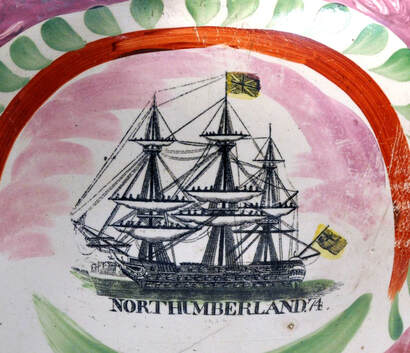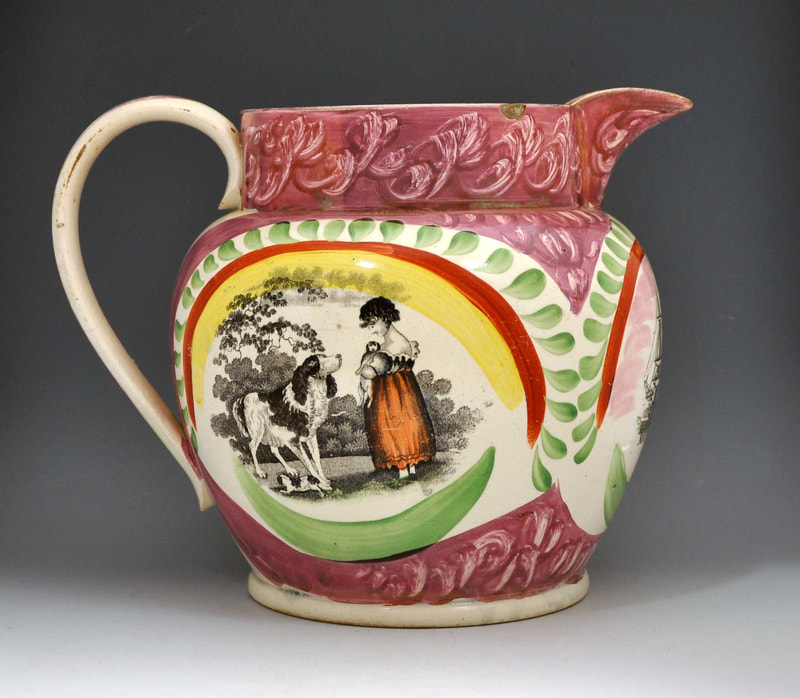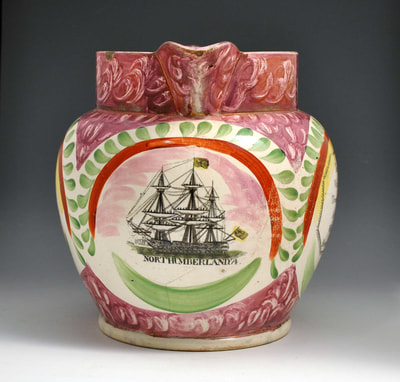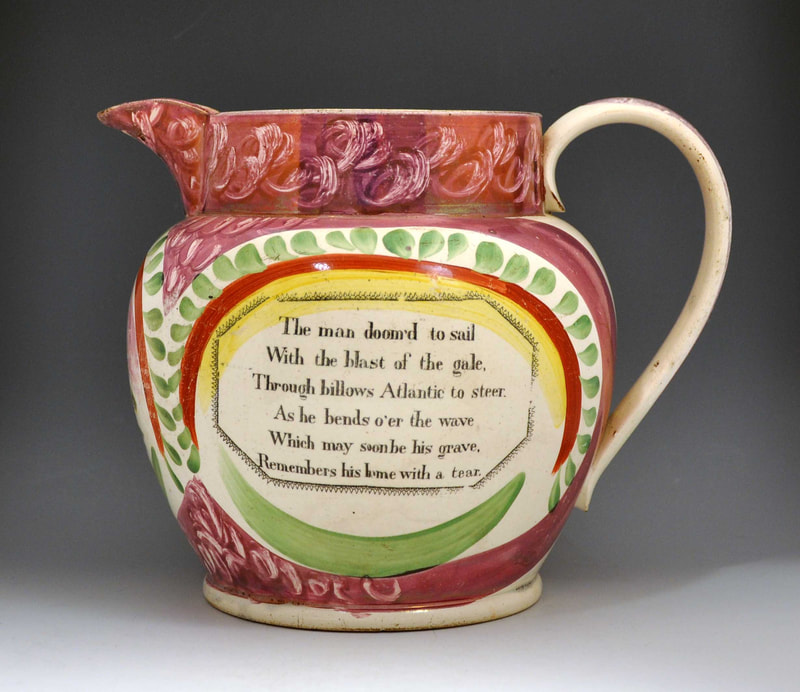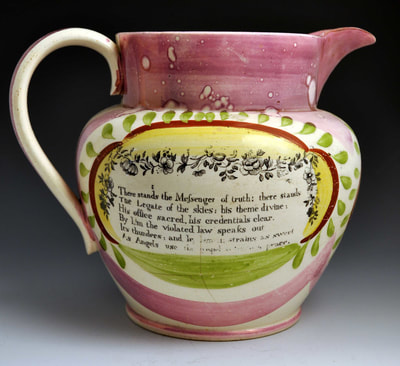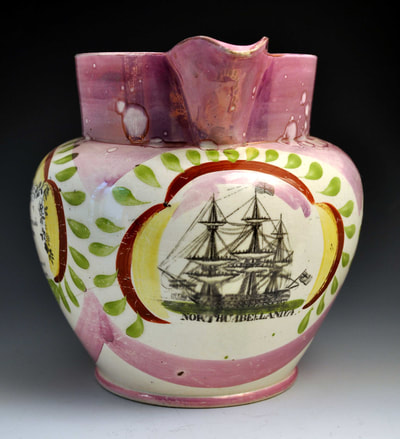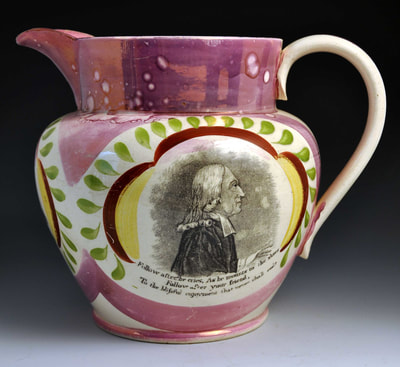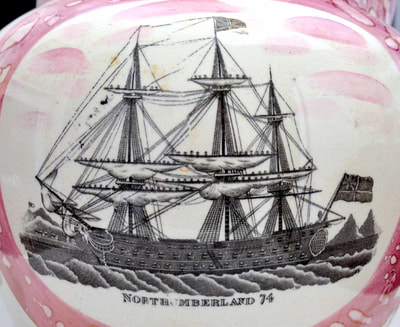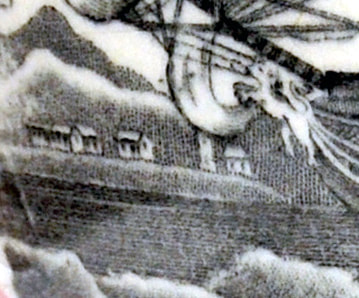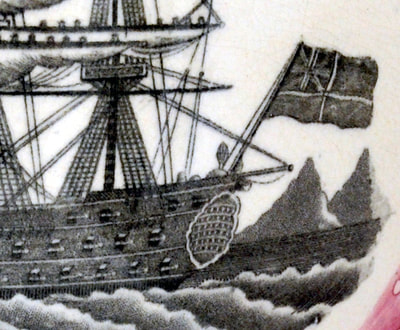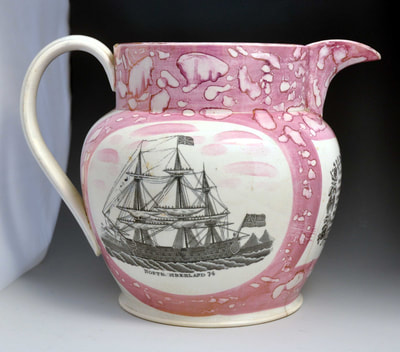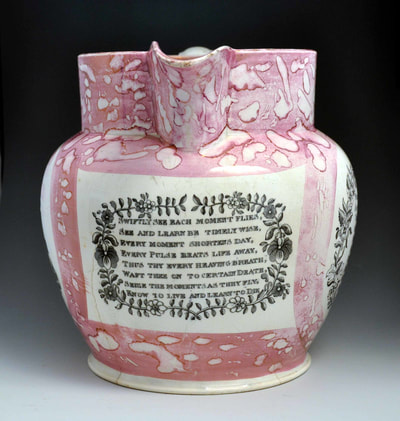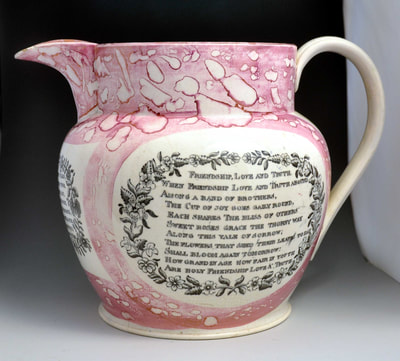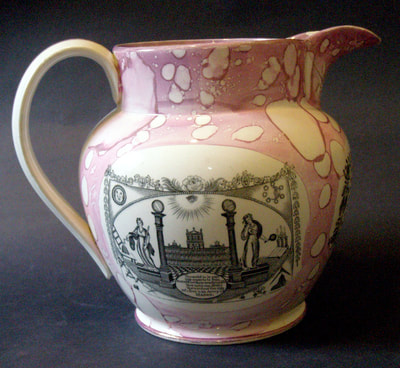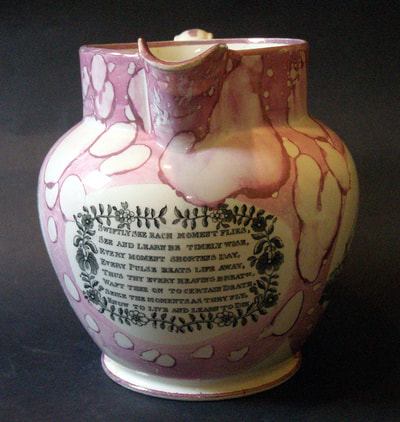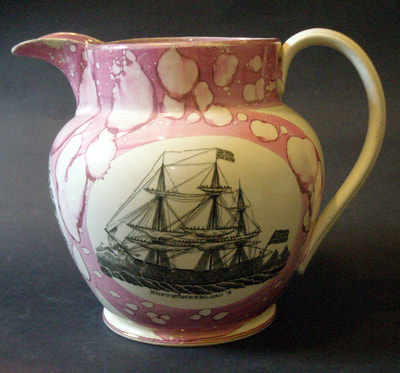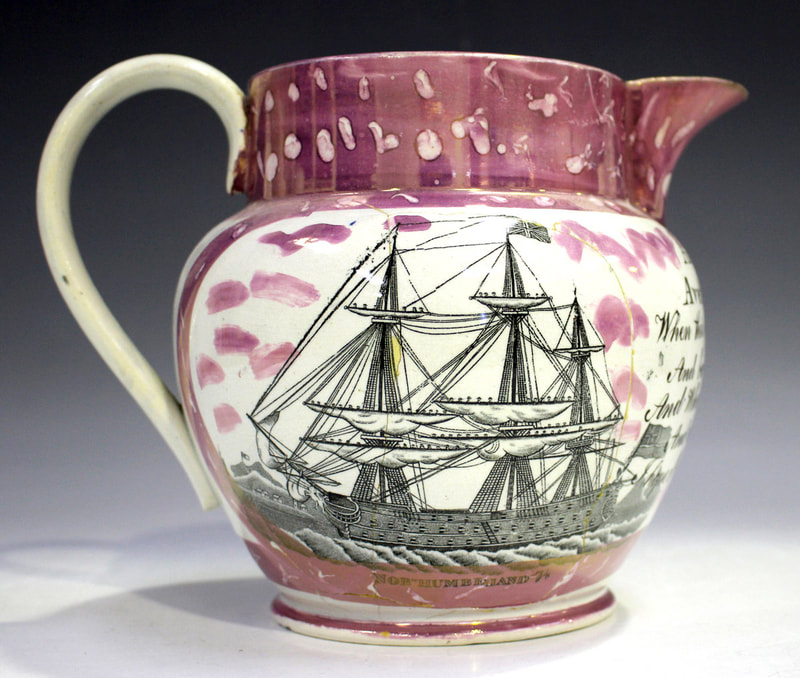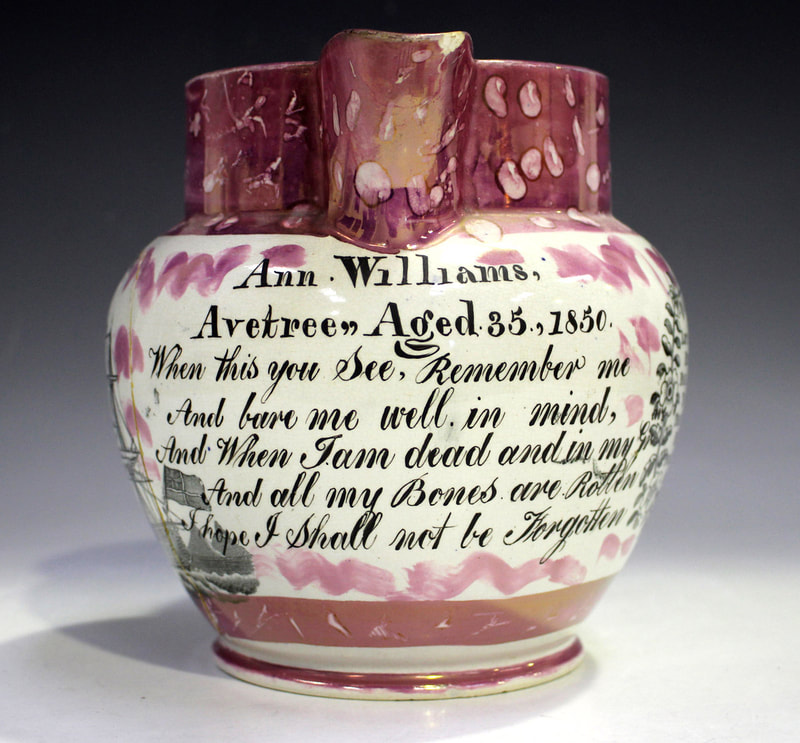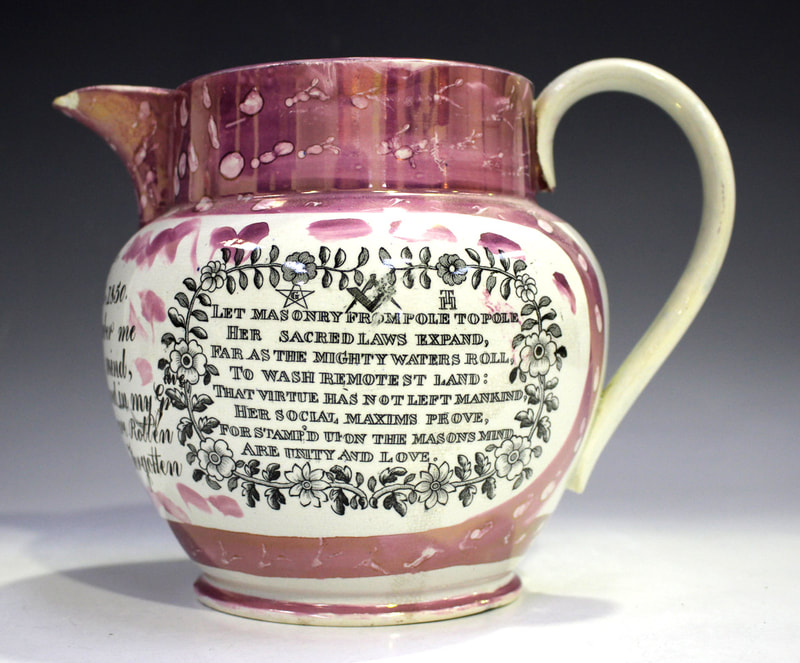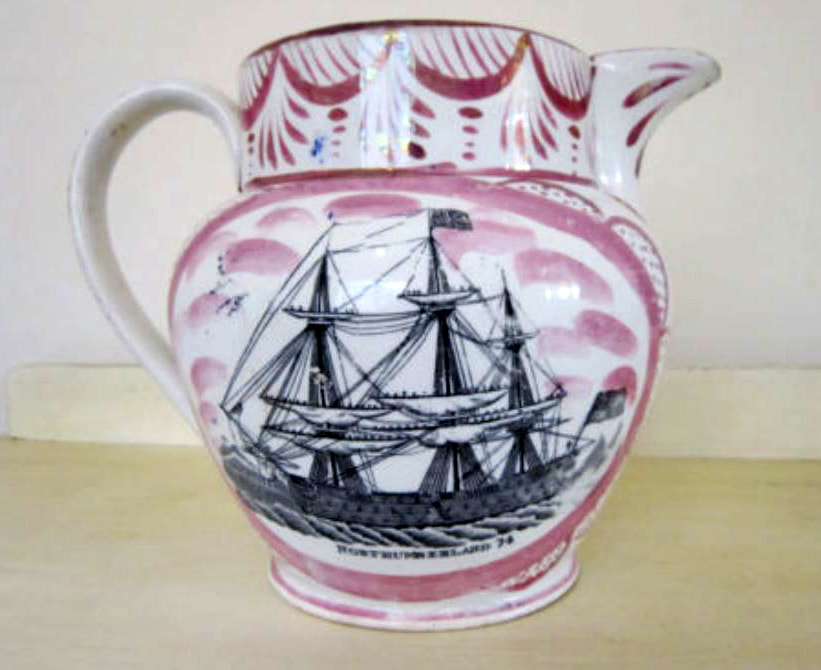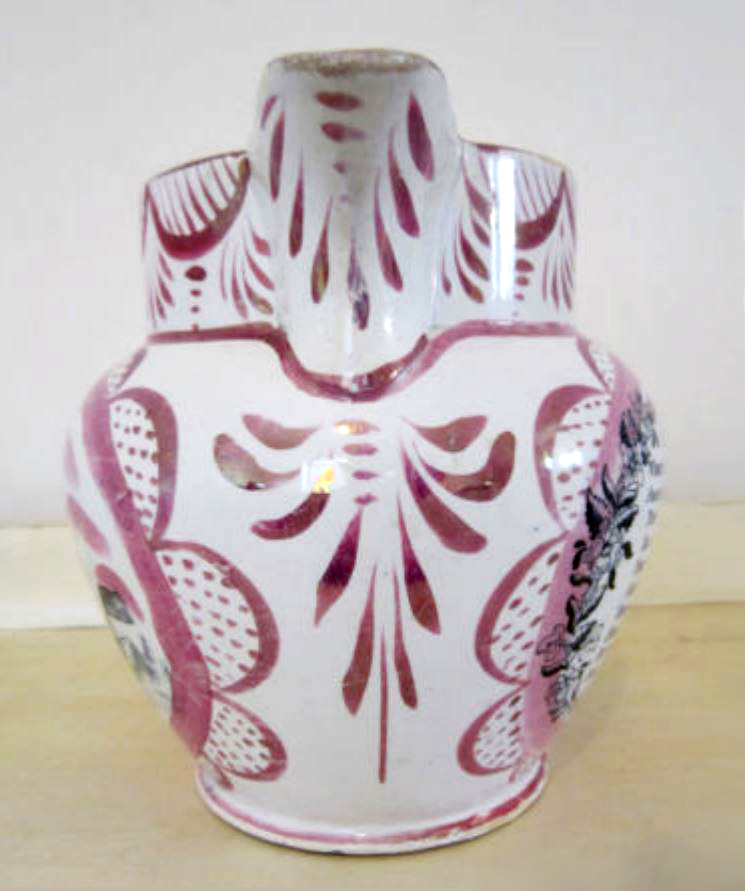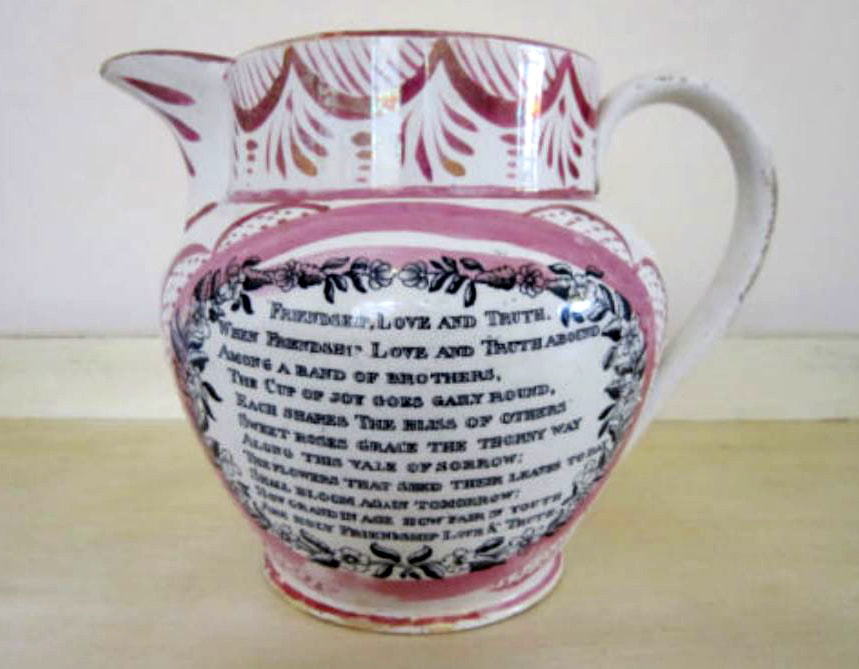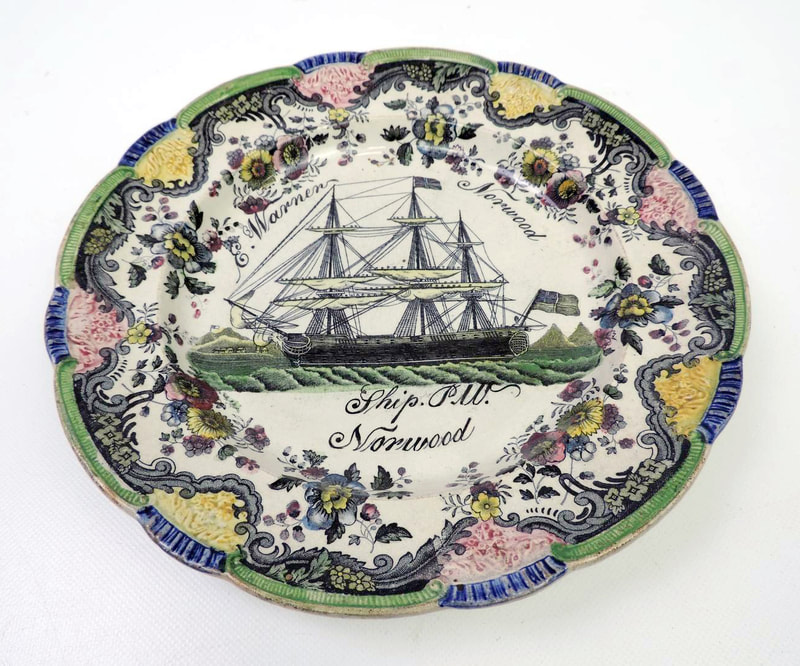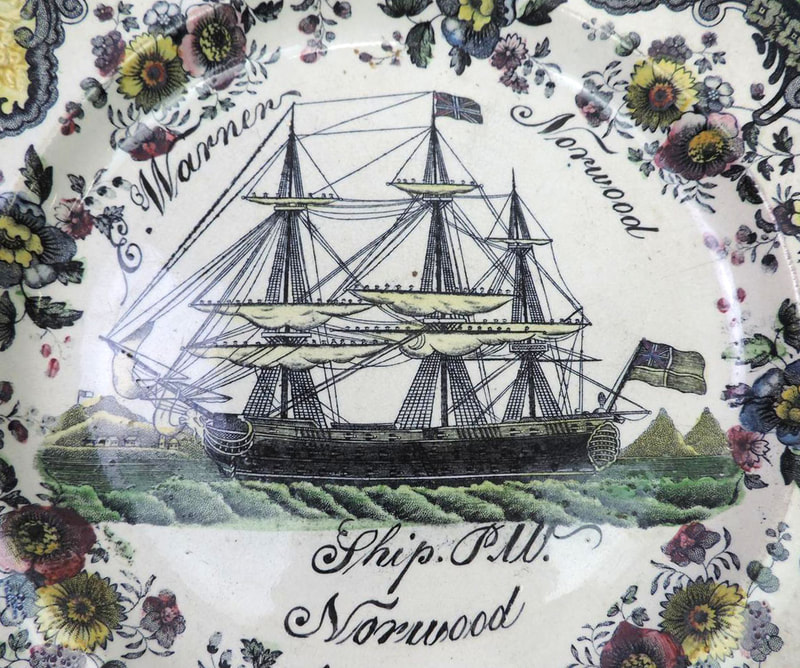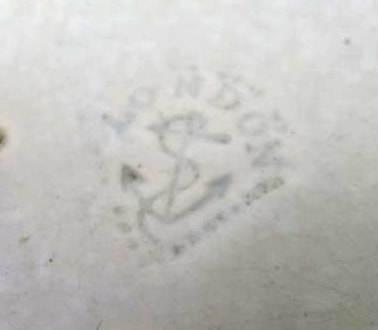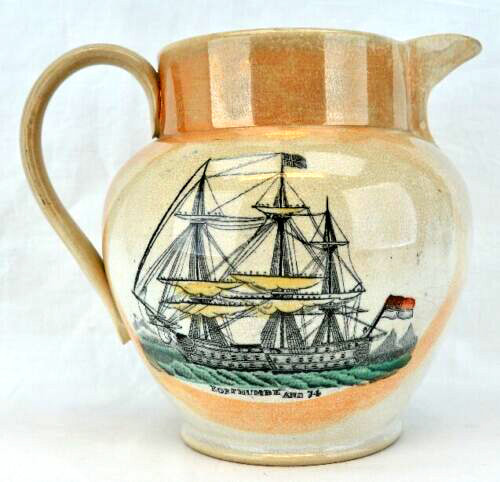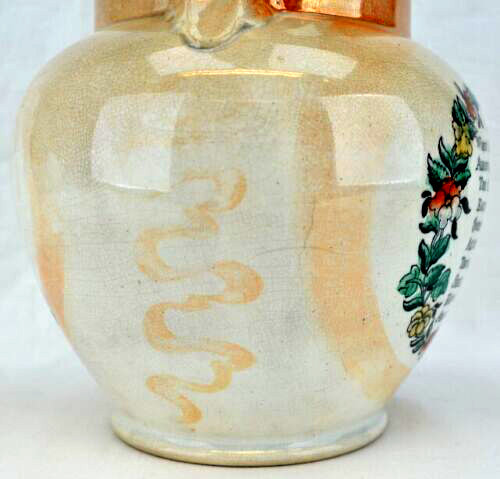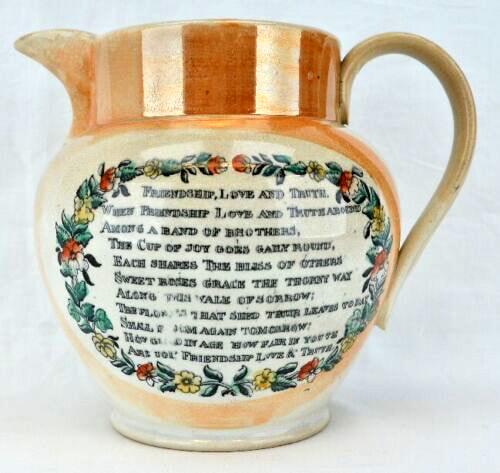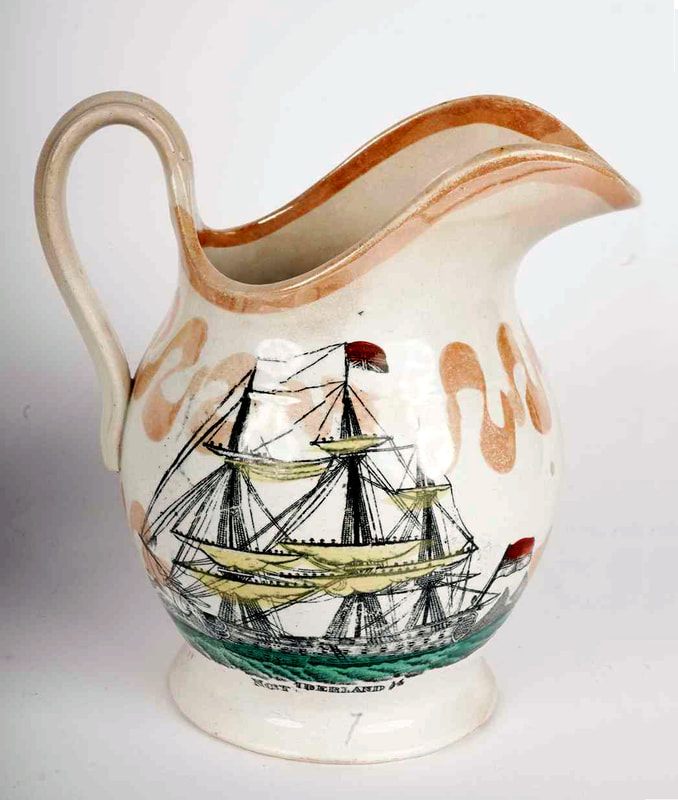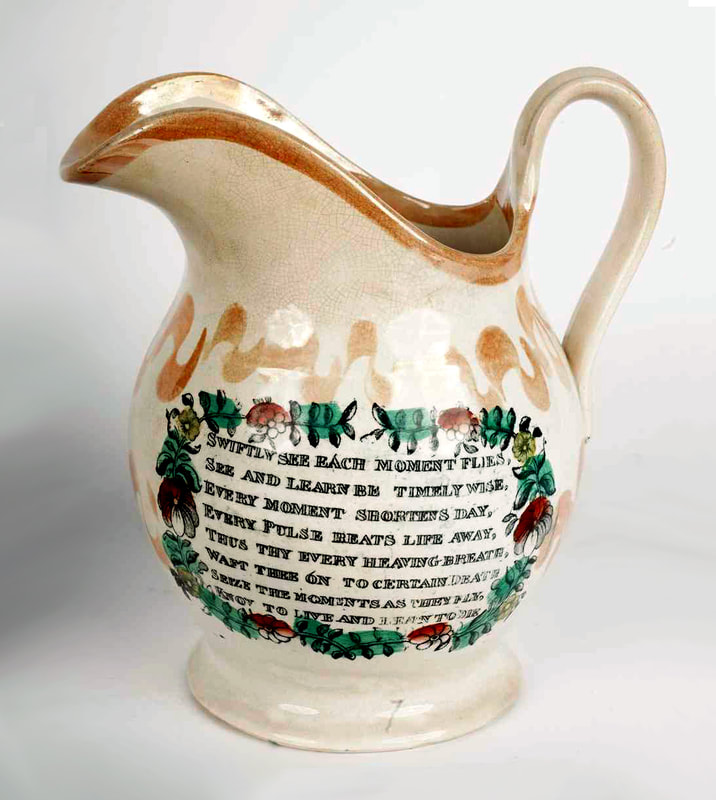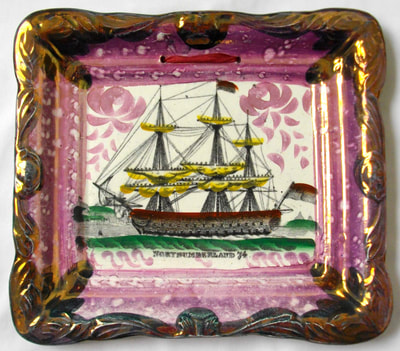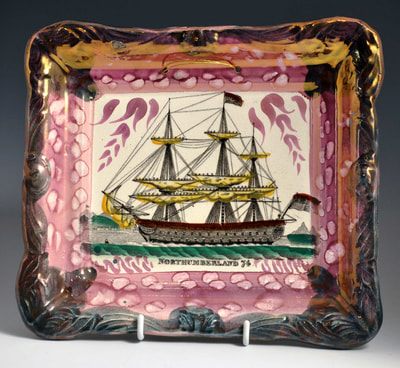Northumberland 74 – Sunderland
Sunderland Pottery, Dixon, Austin & Co, 1818–1839 – plate 1
This transfer was used by the Dixon, Austin & Co partnership at the Sunderland Pottery from 1818 to 1839. This large creamware jug is from the start of that period. The enamelling over the transfer remains consistent into the 1830s.
The first jug below has an inscription with the date 1823. The two beneath it were made in the 1830s.
The two details below are from the first two jugs above respectively.
Above is a version of the transfer with the printed mark, 'Dixon & Co Sunderland Pottery' on a jug of giant proportions (13 inches high), and an inscription dated 1832.
Attributed to Dixon Phillips & Co, c 1839 – plate 1
The plate below appears to have an indistinct Dixon, Phillips & Co anchor mark, used from c1839. The printed mark to the right of the ship is trimmed.
Attributed to Sunderland Pottery, Dixon, Austin & Co, 1830s – plate 2
A small version of the transfer without the printed factory mark on wares from the 1830s. The eel pot below has transfers on the lid that are peculiar to Dixon.
It also appears on small finely potted jugs. The decoration of the spout is typical of Dixon, Austin & Co.
Finally, the transfer on a large, quart size, mug.
Garrison Pottery, Dixon, 1840–65 – plate 3
The second marriage jug is dated 1855. The third with a floral collar.
The transfer on a larger size jug with second handle to aid pouring.
The bowl below, with an inscription for 1858, shows the transfer in use in the final years of the Garrison Pottery, which closed in 1865.
Northumberland 74 – Tyneside
Attributed to Carr and Patton, Low Lights Pottery, North Shields
A small version of the transfer appears on jugs with green-flecked decoration from the 1830s. Although I have attributed the larger portion of jugs decorated like this to Robert Maling, these transfers belong to a unique sub group. Note that, unlike the Maling examples, the green enamel is applied neatly in teardrop shapes. Carr and Patton appear to be emulating their neighbour's green fleck decoration. See a jug with similar decoration attributed to Carr & Patton here and another here.
Carr & Patton; John Carr & Co; and John Carr & Son, Low Lights Pottery
The Carr and Patton version (1840–1850) is very similar to the Garrison transfer, but with two obvious differences. There is no buoy floating to the left of the ship, and there is no full stop after 74 in the title. It seems likely that jugs with the transfer were made into the John Carr & Co (c1850–1854) and John Carr & Son (1854–1861) periods at the Low Lights Pottery.
The transfer above is from an immense jug (first line below). Beneath it two jugs with masonic transfers. The third jug has a hand-painted inscription for 1850. These jugs could easily be mistaken for Dixon items.
Below, an elaborately decorated jug with swags of pink lustre around the collar, c1850.
Below the transfer has been repurposed as another ship with the title replaced by a hand-painted inscription. The impressed London mark was used by a small group of Tyne potteries on items presumably bound for a London distributor. Read more here.
John Carr & Sons, Low Lights Pottery 1
This is the Carr & Patton transfer above. Orange lustre was introduced c1865 (about the time the Garrison Pottery closed, and to date I've not recorded any orange lustre Dixon examples). The jug and ewer below have orange wavy lustre decoration, which is typical of North Shields during this later period.
John Carr & Sons, Low Lights Pottery 2
This transfer, although used on Carr items, appears to be Dixon version above. It is likely that Carr purchased the transfer plates when the Garrison Pottery closed in 1865.
